

Teaching Methods and Strategies: The Complete Guide
You’ve completed your coursework. Student teaching has ended. You’ve donned the cap and gown, crossed the stage, smiled with your diploma and went home to fill out application after application.
Suddenly you are standing in what will be your classroom for the next year and after the excitement of decorating it wears off and you begin lesson planning, you start to notice all of your lessons are executed the same way, just with different material. But that is what you know and what you’ve been taught, so you go with it.
After a while, your students are bored, and so are you. There must be something wrong because this isn’t what you envisioned teaching to be like. There is.
Figuring out the best ways you can deliver information to students can sometimes be even harder than what students go through in discovering how they learn best. The reason is because every single teacher needs a variety of different teaching methods in their theoretical teaching bag to pull from depending on the lesson, the students, and things as seemingly minute as the time the class is and the subject.
Using these different teaching methods, which are rooted in theory of different teaching styles, will not only help teachers reach their full potential, but more importantly engage, motivate and reach the students in their classes, whether in person or online.
Teaching Methods
Teaching methods, or methodology, is a narrower topic because it’s founded in theories and educational psychology. If you have a degree in teaching, you most likely have heard of names like Skinner, Vygotsky , Gardner, Piaget , and Bloom . If their names don’t ring a bell, you should definitely recognize their theories that have become teaching methods. The following are the most common teaching theories.
Behaviorism
Behaviorism is the theory that every learner is essentially a “clean slate” to start off and shaped by emotions. People react to stimuli, reactions as well as positive and negative reinforcement, the site states.
Learning Theories names the most popular theorists who ascribed to this theory were Ivan Pavlov, who many people may know with his experiments with dogs. He performed an experiment with dogs that when he rang a bell, the dogs responded to the stimuli; then he applied the idea to humans.
Other popular educational theorists who were part of behaviorism was B.F. Skinner and Albert Bandura .
Social Cognitive Theory
Social Cognitive Theory is typically spoken about at the early childhood level because it has to do with critical thinking with the biggest concept being the idea of play, according to Edwin Peel writing for Encyclopedia Britannica . Though Bandura and Lev Vygotsky also contributed to cognitive theory, according to Dr. Norman Herr with California State University , the most popular and first theorist of cognitivism is Piaget.
There are four stages to Piaget’s Theory of Cognitive Development that he created in 1918. Each stage correlates with a child’s development from infancy to their teenage years.
The first stage is called the Sensorimotor Stage which occurs from birth to 18 months. The reason this is considered cognitive development is because the brain is literally growing through exploration, like squeaking horns, discovering themselves in mirrors or spinning things that click on their floor mats or walkers; creating habits like sleeping with a certain blanket; having reflexes like rubbing their eyes when tired or thumb sucking; and beginning to decipher vocal tones.
The second stage, or the Preoperational Stage, occurs from ages 2 to 7 when toddlers begin to understand and correlate symbols around them, ask a lot of questions, and start forming sentences and conversations, but they haven’t developed perspective yet so empathy does not quite exist yet, the website states. This is the stage when children tend to blurt out honest statements, usually embarrassing their parents, because they don’t understand censoring themselves either.
From ages 7 to 11, children are beginning to problem solve, can have conversations about things they are interested in, are more aware of logic and develop empathy during the Concrete Operational Stage.
The final stage, called the Formal Operational Stage, though by definition ends at age 16, can continue beyond. It involves deeper thinking and abstract thoughts as well as questioning not only what things are but why the way they are is popular, the site states. Many times people entering new stages of their lives like high school, college, or even marriage go through elements of Piaget’s theory, which is why the strategies that come from this method are applicable across all levels of education.
The Multiple Intelligences Theory
The Multiple Intelligences Theory states that people don’t need to be smart in every single discipline to be considered intelligent on paper tests, but that people excel in various disciplines, making them exceptional.
Created in 1983, the former principal in the Scranton School District in Scranton, PA, created eight different intelligences, though since then two others have been debated of whether to be added but have not yet officially, according to the site.
The original eight are musical, spatial, linguistic, mathematical, kinesthetic, interpersonal, intrapersonal and naturalistic and most people have a predominant intelligence followed by others. For those who are musically-inclined either via instruments, vocals, has perfect pitch, can read sheet music or can easily create music has Musical Intelligence.
Being able to see something and rearrange it or imagine it differently is Spatial Intelligence, while being talented with language, writing or avid readers have Linguistic Intelligence. Kinesthetic Intelligence refers to understanding how the body works either anatomically or athletically and Naturalistic Intelligence is having an understanding of nature and elements of the ecosystem.
The final intelligences have to do with personal interactions. Intrapersonal Intelligence is a matter of knowing oneself, one’s limits, and their inner selves while Interpersonal Intelligence is knowing how to handle a variety of other people without conflict or knowing how to resolve it, the site states. There is still an elementary school in Scranton, PA named after their once-principal.
Constructivism
Constructivism is another theory created by Piaget which is used as a foundation for many other educational theories and strategies because constructivism is focused on how people learn. Piaget states in this theory that people learn from their experiences. They learn best through active learning , connect it to their prior knowledge and then digest this information their own way. This theory has created the ideas of student-centered learning in education versus teacher-centered learning.
Universal Design for Learning
The final method is the Universal Design for Learning which has redefined the educational community since its inception in the mid-1980s by David H. Rose. This theory focuses on how teachers need to design their curriculum for their students. This theory really gained traction in the United States in 2004 when it was presented at an international conference and he explained that this theory is based on neuroscience and how the brain processes information, perform tasks and get excited about education.
The theory, known as UDL, advocates for presenting information in multiple ways to enable a variety of learners to understand the information; presenting multiple assessments for students to show what they have learned; and learn and utilize a student’s own interests to motivate them to learn, the site states. This theory also discussed incorporating technology in the classroom and ways to educate students in the digital age.
Teaching Styles
From each of the educational theories, teachers extract and develop a plethora of different teaching styles, or strategies. Instructors must have a large and varied arsenal of strategies to use weekly and even daily in order to build rapport, keep students engaged and even keep instructors from getting bored with their own material. These can be applicable to all teaching levels, but adaptations must be made based on the student’s age and level of development.
Differentiated instruction is one of the most popular teaching strategies, which means that teachers adjust the curriculum for a lesson, unit or even entire term in a way that engages all learners in various ways, according to Chapter 2 of the book Instructional Process and Concepts in Theory and Practice by Celal Akdeniz . This means changing one’s teaching styles constantly to fit not only the material but more importantly, the students based on their learning styles.
Learning styles are the ways in which students learn best. The most popular types are visual, audio, kinesthetic and read/write , though others include global as another type of learner, according to Akdeniz . For some, they may seem self-explanatory. Visual learners learn best by watching the instruction or a demonstration; audio learners need to hear a lesson; kinesthetic learners learn by doing, or are hands-on learners; read/write learners to best by reading textbooks and writing notes; and global learners need material to be applied to their real lives, according to The Library of Congress .
There are many activities available to instructors that enable their students to find out what kind of learner they are. Typically students have a main style with a close runner-up, which enables them to learn best a certain way but they can also learn material in an additional way.
When an instructor knows their students and what types of learners are in their classroom, instructors are able to then differentiate their instruction and assignments to those learning types, according to Akdeniz and The Library of Congress. Learn more about different learning styles.
When teaching new material to any type of learner, is it important to utilize a strategy called scaffolding . Scaffolding is based on a student’s prior knowledge and building a lesson, unit or course from the most foundational pieces and with each step make the information more complicated, according to an article by Jerry Webster .
To scaffold well, a teacher must take a personal interest in their students to learn not only what their prior knowledge is but their strengths as well. This will enable an instructor to base new information around their strengths and use positive reinforcement when mistakes are made with the new material.
There is an unfortunate concept in teaching called “teach to the middle” where instructors target their lessons to the average ability of the students in their classroom, leaving slower students frustrated and confused, and above average students frustrated and bored. This often results in the lower- and higher-level students scoring poorly and a teacher with no idea why.
The remedy for this is a strategy called blended learning where differentiated instruction is occurring simultaneously in the classroom to target all learners, according to author and educator Juliana Finegan . In order to be successful at blended learning, teachers once again need to know their students, how they learn and their strengths and weaknesses, according to Finegan.
Blended learning can include combining several learning styles into one lesson like lecturing from a PowerPoint – not reading the information on the slides — that includes cartoons and music associations while the students have the print-outs. The lecture can include real-life examples and stories of what the instructor encountered and what the students may encounter. That example incorporates four learning styles and misses kinesthetic, but the activity afterwards can be solely kinesthetic.
A huge component of blended learning is technology. Technology enables students to set their own pace and access the resources they want and need based on their level of understanding, according to The Library of Congress . It can be used three different ways in education which include face-to-face, synchronously or asynchronously . Technology used with the student in the classroom where the teacher can answer questions while being in the student’s physical presence is known as face-to-face.
Synchronous learning is when students are learning information online and have a teacher live with them online at the same time, but through a live chat or video conferencing program, like Skype, or Zoom, according to The Library of Congress.
Finally, asynchronous learning is when students take a course or element of a course online, like a test or assignment, as it fits into their own schedule, but a teacher is not online with them at the time they are completing or submitting the work. Teachers are still accessible through asynchronous learning but typically via email or a scheduled chat meeting, states the Library of Congress.
The final strategy to be discussed actually incorporates a few teaching strategies, so it’s almost like blended teaching. It starts with a concept that has numerous labels such as student-centered learning, learner-centered pedagogy, and teacher-as-tutor but all mean that an instructor revolves lessons around the students and ensures that students take a participatory role in the learning process, known as active learning, according to the Learning Portal .
In this model, a teacher is just a facilitator, meaning that they have created the lesson as well as the structure for learning, but the students themselves become the teachers or create their own knowledge, the Learning Portal says. As this is occurring, the instructor is circulating the room working as a one-on-one resource, tutor or guide, according to author Sara Sanchez Alonso from Yale’s Center for Teaching and Learning. For this to work well and instructors be successful one-on-one and planning these lessons, it’s essential that they have taken the time to know their students’ history and prior knowledge, otherwise it can end up to be an exercise in futility, Alonso said.
Some activities teachers can use are by putting students in groups and assigning each student a role within the group, creating reading buddies or literature circles, making games out of the material with individual white boards, create different stations within the classroom for different skill levels or interest in a lesson or find ways to get students to get up out of their seats and moving, offers Fortheteachers.org .
There are so many different methodologies and strategies that go into becoming an effective instructor. A consistent theme throughout all of these is for a teacher to take the time to know their students because they care, not because they have to. When an instructor knows the stories behind the students, they are able to design lessons that are more fun, more meaningful, and more effective because they were designed with the students’ best interests in mind.
There are plenty of pre-made lessons, activities and tests available online and from textbook publishers that any teacher could use. But you need to decide if you want to be the original teacher who makes a significant impact on your students, or a pre-made teacher a student needs to get through.
Read Also: – Blended Learning Guide – Collaborative Learning Guide – Flipped Classroom Guide – Game Based Learning Guide – Gamification in Education Guide – Holistic Education Guide – Maker Education Guide – Personalized Learning Guide – Place-Based Education Guide – Project-Based Learning Guide – Scaffolding in Education Guide – Social-Emotional Learning Guide
Similar Posts:
- Discover Your Learning Style – Comprehensive Guide on Different Learning Styles
- 35 of the BEST Educational Apps for Teachers (Updated 2024)
- 15 Learning Theories in Education (A Complete Summary)
Leave a Comment Cancel reply
Save my name and email in this browser for the next time I comment.
- Assignment Writing Service
- Homework Service
- Write My Essay
- Report Service
- Personal Statement Service
- Research Paper Service
- Speech Service
- College Essay Writing Service
- Our Writers
- Testimonials
- Manage your orders
- Place your order instantly
Essay on Teaching Methods for Effective Learning Today

In what way are/were you taught and how will you teach? Teaching methods are vital for everyone – we all go or went to a school where teachers try to involve each student in the learning process. Namely, this learning process is identified as effective or ineffective by means of effective or ineffective methods of teaching accordingly. Methods of teaching are one of the primary topics any student undergoing pedagogic training has to deal with. It is no wonder that the majority of questions arising in this field are in this or that way connected with misconceptions or wrong assumptions concerning this topic. That is exactly what explains why a student willing to master knowledge or skills should pay special attention to grasping at least the basic theory of teaching methods and doing a lot of practice: for example, writing an essay about it.
In this article, you’ll learn how to write an essay on the topic “Teaching Methods”. Besides, you are given the list of references you can consult additionally. Make progress in essay writing right now!
3 ‘Teaching Methods’ Issues to Address in an Essay
You as a person who is receiving education don’t think about methods employed in this process. Education is something that just happens to you, and you don’t give extra thought to how it all is organized. Right? It is a common perception among students but the task to write an essay about teaching methods can’t remain unaddressed as it will influence your academic performance that is expressed in marks. You can do your best to get high marks for writing this particular essay. First and foremost, address the key points of the topic. Here you are:
1. Groups of Teaching Methods Differ in Outcomes, But All Are Aimed at Teaching
In reality, teaching methods are a complicated and multi-lateral issue, with many opposing schools of thought. When all’s said and done, however, most teaching methods can be roughly subdivided into two groups: teacher-centric and student-centric.
- Teacher-centric learning approach is also often referred to as the traditional educational model because it is basically what we are all used to associate with teaching and studying. In this model, students are considered to be de-facto “empty vessels”, passive receivers of knowledge and skills. It is a teacher’s job to provide instructions and guidance for them, “filling up” these empty vessels in the process, and students are supposed to learn by listening to lectures, observing and copying the teacher’s actions and in general subjecting themselves to the teacher’s ultimate authority.
- Student-centric learning approach to learning is a much more recent development, placing emphasis on students’ participation in the educational process. This approach considers students to be not just objects but subjects of education as well, and the teacher’s role is viewed as not as that of the instructor but facilitator and delegator. To simplify it a bit, a teacher doesn’t provide one or another method of doing things that are already set in stone but offers guidance and support so that students are capable to figure things out on their own, thus making them active participants of the process.
- Another subtype of student-centric approach, the so-called cooperative learning, emphasizes teamwork: students are encouraged to work in groups and engage in reciprocal teaching. The teacher is not eliminated from the equation altogether, but his role, again, is that of facilitator and delegator rather than that of the one and only authority on every question. This method is based on the assumption that students learn best when they work and communicate with their peers.
It is important to understand that there are no good or bad methods of teaching. One can easily assume that a teacher-centric approach is outdated, anachronistic and generally “bad”, while the student-centric one is progressive and modern. However, they both have their areas of application. For example, teacher-centric methods far outpace student-centric ones in teaching fundamental skills. In other words, both groups of teaching methods have their areas of application and can be used to great effect – if used appropriately.
2. The Areas of Teaching Methods Application Differ as Well
If we start speaking about different areas of using specific teaching methods, it is logical to name them. Don’t omit this point in your essay as well. Today, the educational process differs from that existing several decades ago. Modern teachers have to not only explain a topic and provide the knowledge to students and mentor them, but also to:
- Facilitate learning for students in a classroom encouraging active learning,
- Develop mutual cooperation among students,
- Give prompt feedback to guide students in the right direction to the progress,
- Motivate students to learn new materials and develop essential skills like problem-solving, critical thinking, etc.
In general, a teacher is supposed to prepare a student to deal with the real world. It is possible only when a person is equipped with the relevant theory and practical skills necessary for successful communication in modern society and personal, professional development. Only this gives a competitive advantage in life. For each aim of teaching, there are particular methods. If a teacher needs to simply present the information, he or she uses a lecture method. It is true that sometimes it is boring to listen to a lecturer. For that reason, this way of teaching is extended by the others, for example, interactive and participative methods. It is important to encourage students’ participation and develop discussions that result in gaining hands-on experience.
3. The Effectiveness of Teaching Methods
More and more instructors develop their teaching approach depending on students’ learning needs . They are far from simply going to school, college or university to get knowledge. Unfortunately, the understanding of learning needs differently can cause various learning challenges and pitfalls and problems in the educational system. The result is that it reflects on the professional development of graduating students negatively. What is a doctor whose learning needs aren’t met at university? The medical system is impaired. So the assessment of learning needs should become part of government policy in relation to the continuing professional development of all professionals. Let’s observe what learning needs determine the appropriate use of teaching methods:
- Know about phenomena occurring to various areas of study;
- Finding answers to different questions;
- Define problems that need to be solved;
- Develop and use original ideas;
- Plan and carry out systematic investigations;
- Analyze and interpret data, a lot of data (due to the information overload);
- Use critical thinking;
- Construct solid explanations and design optimal solutions and many more.
All these needs, exactly their fulfillment, influence the effectiveness of using one or another teaching method. The most critical condition applicable to effective teaching in the 21st century is that all the teaching practices need to create personal and social relevance for students. They need to be intellectually and emotionally engaged in their own active learning, in other words, motivated to learn this world and solve some problems. In fact, teaching for success while taking a test is insufficient today. The current education policies that give priority to assessment need to be severely curtailed.
This idea and many other ideas can be mentioned in your essay about teaching methods. However, it is important to always back up all the research ideas. Look at the following references you can also use in your essay:
7 References to Use in the Essay about Teaching Methods
- Arnold, J. (1998). Towards more humanistic English teaching. ELT Journal, 52(3), pp.235-242.
- Bligh, D. (2000). What’s the use of lectures?. San Francisco: Jossey-Bass.
- Cullen, R. (1998). Teacher talk and the classroom context. ELT Journal, 52(3), pp.179-187.
- Dörnyei, Z. (2001). Motivational strategies in the language classroom. Cambridge: Cambridge University Press.
- Gibbons, M. (2002). The self-directed learning handbook. San Francisco, Calif.: Jossey-Bass.
- Legge, K. and Harari, P. (2000). Psychology and education. Oxford: Heinemann.
- Wiseman, A. and Anderson, E. (n.d.). Annual review of comparative and international education 2014.
- Book Review
- College Life Struggle
- Eminent Literature Personalities
- Essay Samples
- Historic Personalities
- Interesting Research Papers
- Interesting Stories
- Research Paper Examples
- Useful Tips
- Writing Tips
Our Unique Features
- 100% Moneyback Guarantee
- Plagiarism Free Guarantee
- Free revisions according to our Revision Policy
- Free title page
- Free bibliography & reference
- Free formatting (APA, MLA, Chicago, Harvard and others)
- 24/7 Customer Support
Spend Less Time on Research!
Puzzling Over Your Essay? Leave It to professionals!
Teaching Methods and Their Determinants Essay
Teaching methods can be described as learning activities that facilitate the flow of information from the teachers to the students whether verbally or through non-verbal communication. Teaching methods can widely be classified into direct and indirect instructions. However, they can be subdivided into smaller groups, and sometimes one teaching method can be integrated with another to facilitate a smooth flow of information. The determinant of the teaching method that flows with the student depends on many factors such as; the age of the students and their developmental stage, the subject matter of the lesson, aims and objectives of the lesson, availability of space, time, and the material used. Direct teaching method: This method involves a systematic way of planning, communication, and the way to deliver in a room setting to the students. This method requires an instructor to have internalized the command of the subject to a level close to mastery. Therefore the teacher understands the context matter in more than one way. Direct teaching helps in the classification of clearly outlined objectives to the students and the seriousness of the matter is emphasized by the instructor. Using this method of teaching it is very easy to gauge the students’ understanding of the subject and therefore makes it the best method for teaching factual content and basic skills. Cooperative learning: This method applies a group work type of approach. Small groups are put together comprising of students with different capabilities. This method uses a wide range of learning activities to promote understanding of the subject.
Each member of the team has a responsibility not only to learning but also in making sure that all the members of the group understand the concept taught. It helps the students in fostering mutual responsibility. Cooperative learning helps the student not only in class but in the development of human qualities of an individual like compassion and responsibility to other students. This method can be limiting in that the introverts can find it hard to share their knowledge with others and consequently the outgoing students may dominate the group creating inferiority to some students. Lecture method: In this method of teaching the students rely on the instructor to pass information to them. Therefore, the lecturer has an upper hand on what the student learns. This method is most appropriate in higher institutions of learning such as colleges. It is most appropriate for students who are auditory learners. This method is advantageous in that factual content can be presented in a very direct and clear way. It is also useful when dealing with large numbers. However, this method can be limiting in that the students who are poor in auditory learning can have a hard time coping and consequently when making notes. The lecture method can be boring and tiresome especially when presented for more than one hour. Communication is one way as the lecturer lectures and the student listens and just makes notes. Videotapes and slides: This is mostly for distance and online learning. Whereby the instructor videotapes their work and then sends it to their students. This is mostly made possible by the availability of net. Videotapes can also be used in a class setting mostly in language classes whereby an instructor teaches the students pronunciation or tonal variations. This method can be advantageous in that the student can be able to make notes easily through rewinding of the tape it also brings a sense of entertainment and is hence easy to remember. The video tape method can be limiting in that communication is one way and there is no room for students to ask the instructor questions.
- Chicago (A-D)
- Chicago (N-B)
IvyPanda. (2021, November 21). Teaching Methods and Their Determinants. https://ivypanda.com/essays/teaching-methods-and-their-determinants/
"Teaching Methods and Their Determinants." IvyPanda , 21 Nov. 2021, ivypanda.com/essays/teaching-methods-and-their-determinants/.
IvyPanda . (2021) 'Teaching Methods and Their Determinants'. 21 November.
IvyPanda . 2021. "Teaching Methods and Their Determinants." November 21, 2021. https://ivypanda.com/essays/teaching-methods-and-their-determinants/.
1. IvyPanda . "Teaching Methods and Their Determinants." November 21, 2021. https://ivypanda.com/essays/teaching-methods-and-their-determinants/.
Bibliography
IvyPanda . "Teaching Methods and Their Determinants." November 21, 2021. https://ivypanda.com/essays/teaching-methods-and-their-determinants/.
- What Is Central Auditory Processing Disorder?
- The Definition of Auditory Neuropathy
- Visual, Auditory, Reading and Writing, and Kinesthetic Learning Styles
- Arguments on Pedagogy of the Oppressed by Paulo Freire
- Coaching Approaches. Separation by Target and Source Data.
- Teacher Conduct in Sensitive Situations
- Pedagogical Principles Combinations
- Classroom Behavior Management
Modern Teaching Methods: An Overview
“Everyone is a genius. But if you judge a fish on its ability to climb a tree, it will live its whole life believing it is stupid.”~ Albert Einstein
This article is part of the Innovation in Education Guide . Learn all about Educational Technology , Innovative Learners , and Innovative Classrooms .
Introduction
The past few years have been a learning curve for everyone, and teachers and students alike had to adapt their learning styles in education. This is how all the modern teaching methods came to be.
Modern teaching methods refer to other ways than the classical in-class method. Students are connected and interact through various tech, and they also form social relationships through different assemblies they are a part of.
Modern teaching is all about the learner and less about the teaching process. This teaching method lets learners participate actively in the lesson, and the teacher only leads them to where they should focus.
Modern teaching methods use new gadgets such as computers or laptops with Wi-Fi connections, LCD projectors and interactive whiteboards.
The importance of innovative teaching strategies
Innovative teaching methods help you with
– Staying connected to learning
– Engaging in various online classes
– Helps students with both knowledge and practical skills
– Emphasises practical knowledge
Advantages of Modern Teaching
Modern teaching is what is needed in these modern times. The technological revolution helps teaching become innovative and, more than this, get to more students than before. Offering innovative teaching styles helps students stay connected and improve their technical knowledge from the beginning.
The main advantages of modern teaching styles are:
– Move from memorising to experimenting
– Helps students innovate
– Develops the interactive side of students
– It allows the student to develop different patterns of learning and focusing
– Develops the cognitive thinking skills
– It treats students differently according to their level of understanding.
– Focus on the understanding of the concepts
Essential skills for a modern teacher
There are some skills that a teacher needs to be able to transmit the correct information to the students. More than just the right information, there is the way the teacher shares that information that matters.
Thus a teacher needs to be:
– Flexible
– To stay updated with everything new in the education domain
– Time to get to know the students
– One-to-one student sessions availability
– Resourceful
Characteristics of Modern Teaching Methods
Learner-centred .
Just as the name describes, the main characteristics of modern teaching can easily be said to be learner-centred. The teacher is the guide that sets the focus, and the learners are those that dominate the class.
Task-Based or Activity-based
This characteristic of modern teaching techniques is a great way to engage students and develop their social interactions. The teacher usually gives an activity-based task, and students participate in it and solve it.
Resource-Based
Both teachers and students can bring study materials. This characteristic describes very well what modern teaching helps students with. It gives students the independence to think, search, select, and draw conclusions. It means having all the necessary study material for the learners to understand the topic thoroughly.
Modern Teaching Methods
Collaborative learning .
Collaborative learning helps students develop their social skills even though they are in an online environment. Teachers choose a topic and form a group where they discuss, debate and solve problems.
The success of the group is the success of each student that is a part of that group. This modern teaching method helps students develop their communication and negotiation skills; they learn to listen and understand others’ points and work in a group.
Spaced Learning
Spaced learning is a teaching method used to help students understand the lesson. It consists of repeating the task as often as necessary until everyone fully understands it. This repetition is done within a 10 minutes break between the classes so that students can grasp what they know.
It is an excellent method for students to learn the basics before moving on to another chapter. It is also an easy way to make them understand the lesson.
Flipped Classroom
A flipped classroom is a beautiful way of teaching. It consists of students studying the lesson at home, understanding it, and then being ready to discuss it. The students can watch videos, search for the topic online or read the classroom material. Whatever fits their needs.
The innovative students come to school with an entire set of questions and can have discussions on the topics with their classmates and teacher. They have everything covered. It is also suitable for when students are sick, as they do not miss any class with this type of learning.
Gamification
This is about using games to excite students about the class and the new materials. It is a great strategy, especially for courses based on a lot of information.
Children of all ages and adults love games – on the field, or online games are entertaining and provide a great way to keep them engaged. It is used a lot in elementary and preschool but can be used at any age.
Teachers are responsible for preparing in advance the projects to use in gamification and use methods that will engage students for a longer time. They can consist of online quizzes, puzzles, games, or anything that will be a challenge for students to stay connected.
Conclusion
The modern teaching method is now developing and is adopted by more and more schools. However, the majority stick to the old way of teaching as if it did have results till now; they believe there is no way of changing it. The decision regarding the teaching method remains with the child and the parents. Each of the two is good and has the same goal.
Modern Teaching Methods FAQ
What is modern teaching .
Modern teaching is the teaching method that puts the learner in the centre. It helps students set the tone of their learning pace; more than this, it does not treat students alike. Modern teaching knows that students differ, and their capacity to understand information is different.
Why is modern teaching the need of the hour?
It is the need of the hour as technology evolves, and students access to technology allows them to understand and see more. If teaching were to remain traditional, students would no longer be interested or engaged. Adopting the modern teaching style where students can share and feel listened to will raise engagement and allow teachers to control students’ focus.
What is the difference between old and new teaching methods?
While in the old teaching methods, teachers used to expect students to listen and learn what they heard without having any extra personal input, in the new teaching method, learners are given the possibility to innovate, create, think, express and argument.
How do innovative teaching strategies improve students’ performance?
Innovative teaching strategies are significant for developing students ready for the future. The independence it gives students develops their thinking and lowers their stress levels.
What are some examples of innovation in teaching and learning?
Innovation teaching in learning can be:
– Collaborative learning
– Self-learning
– Vak – teaching
– Crossover thinking
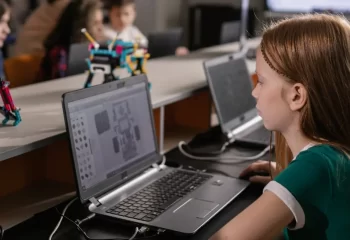
Why You Should Enrol in an Online Learning Subscription

Unlimited Learning Subscription: Learn Without Limits
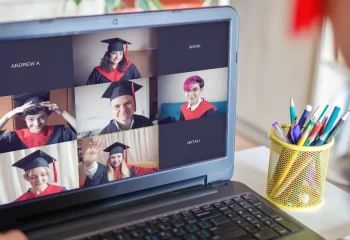
How can I get my high school diploma online?
Join our community of superheroes.
Your superhero story begins with a simple click. Sign up for our newsletter and embrace a journey where you're not only learning but also finding your cape - your unique superpower.

- Office of Curriculum, Assessment and Teaching Transformation >
- Teaching at UB >
- Course Development >
- Design Your Course >
Teaching Methods
Choosing optimal methods to support learning outcomes.
On this page:
The importance of teaching methods.
Teaching methods are the broader techniques used to help students achieve learning outcomes, while activities are the different ways of implementing these methods. Teaching methods help students:
- master the content of the course
- learn how to apply the content in particular contexts
Instructors should identify which teaching methods will properly support a particular learning outcome. Its effectiveness depends on this alignment. To make the most appropriate choice, an instructor should consider learning outcomes, student needs and the learning environment.
Consider the following example:
- Learning outcome: Solve a complex math equation.
- Learning environment: An in person, upper-level math course with 20 students.
- Teaching method: Guided instruction. First, the instructor facilitates learning by modeling and scaffolding. Students take time to ask questions and receive clarifications. Next, students practice applying these skills together and then independently. The instructor uses formative assessment to check for understanding.
This example demonstrates alignment of what the instructor wants students to do, and how they are supported in these tasks. If the instructor choses a different teaching method, such as a traditional lecture, students would need to process the lecture’s content and apply principles simultaneously. This is very difficult to do and would lead to less successful outcomes.
Choosing the appropriate teaching method brings instruction to life while encouraging students to actively engage with content and develop their knowledge and skills.
The chart below provides a number of teaching methods to choose from. Teaching methods vary in their approach, some are more student-centered while others are more instructor centered, and you will see this reflected in the chart. Choose methods that will best guide your students to achieve the learning outcomes you’ve set and remember that your teaching approach, teaching methods and activities all work together.
Table adapted from: Nilson (2016)
Choose Your Methods
Using the Course Design Template explore the aspects that will likely affect your course.
- Step 1: Review your learning outcomes.
- Step 2: Identify the teaching methods that best align to these learning outcomes and fill in the appropriate column.
- Step 3: Consider possible activities which will next be examined in further detail.
Now that you’ve reviewed a variety of teaching methods and considered which ones align with your learning outcomes, the next step is to consider activities.
- Nilson, L. B. (2016). Teaching at Its Best: A Research-Based Resource for College Instructors (Fourth). John Wiley & Sons.

- Teaching & learning
- The Complete List of Teaching Methods and Strategies

Apply as a tutor to teach students online from anywhere in the world.
The complete list of teaching methods and strategies.
- Chloe Daniel
- Published On: September 11 ,2021
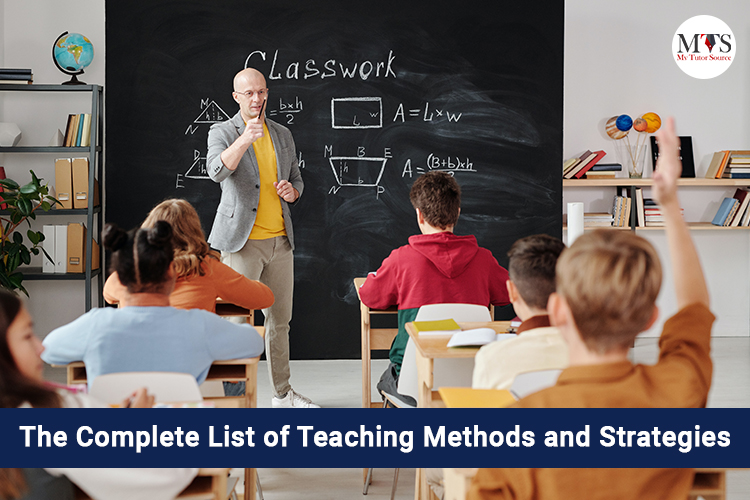
Teachers are the main asset of a country because they are nation builders. Teachers and education systems play a vital role in building an individual’s character, and great teachers have set examples of changing their student’s lives. Therefore, one country should invest more in its educational institutes and teachers to succeed. You can find an endless amount of stories about how appropriate teaching methods and strategies have brought remarkable changes in a student’s life. The art of teaching matters a lot. To be a successful teacher, one should know all the possible teaching methods and strategies and use them correctly because students learn better when their teacher knows which teaching method will engage the students more.
Bertrand Russell has summed up the whole process in his quote as:
‘More important than the curriculum is the question of the methods of teaching and the spirit in which the teaching is given.’
After reading this blog, you will understand the difference between teaching methods and strategies, different teaching methodologies and strategies, their advantages and disadvantages, and how a teacher should prepare himself before the class lecture.
So let’s get started.
Difference between teaching methods and strategies
Methods and strategies are two different terms, but both are essential to make a class full of students of different caliber and understand the same subject. The method is a process, procedure, or way something is done or implementing a plan. While on the other hand, strategy is the goal, set of actions, or plans to achieve one aim or something. Let me clarify it with an example: strategy is how a teacher makes a whole year’s plan to complete a specific book or syllabus, and the method is how that teacher delivered the lecture or which way the teacher selects to do a task.
And there is a list of teaching methods and strategies acquired by the teachers or instructors that you will read below. The ideal teaching method is the one in which the learning of students occurs the most. Teaching and learning are considered the two sides of a coin, and for completing the teaching side, teachers should consider all the teaching strategies and methods.
Related Read: Hacks to Help Students Beat Procrastination
Types of teaching methods
The way of teaching is categorized into different types of teaching methods adopted by the teachers, and most of them are mentioned below:
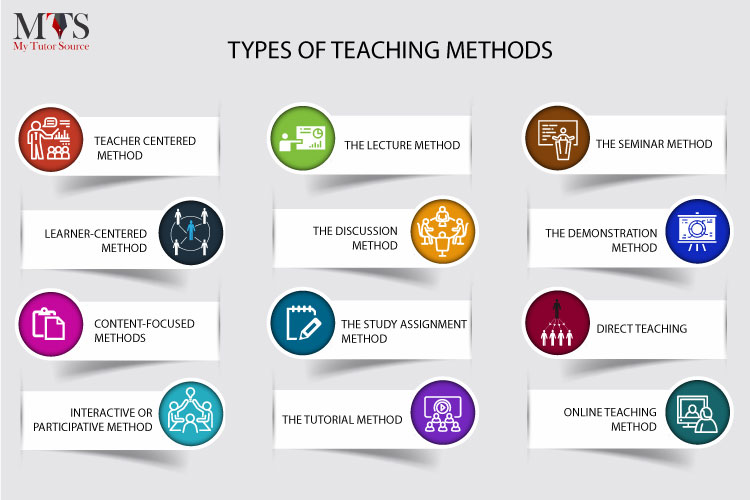
Teacher centered method
It is the method where the teacher is the only expert or an authority figure for the learners or students. They rely on the expert and receive knowledge to achieve positive grades in the end exams or assessments. The lecture method is used in the teacher-centered method, and it requires very little involvement of students or learners during the teaching process. It is also called a closed-ended method if the involvement of learners or students is zero.
Learner-centered method
In this teaching method, the teachers play a dual role. They act as learners and teachers; they learn new things every day while delivering the lecture. The learner-centered method is beneficial for both teacher and the student. The best way to implement this method is to follow the class’s discussion, inquiry-based, or discovery strategies.
Content-focused methods
Among different teaching methodologies, the teacher can use the content-focused method when the content, set of information, or skill taught by the teachers or experts cannot be changed or altered. It means the content to be taught is so important or unimpeachable that both the learner and the teacher have to fit in the subject without being critical about the content.
Interactive or participative method
It is the type of learning method that is considered beneficial for both the learners and the teachers. The teacher’s responsibility is to explain the key points or the importance of following the interactive or participating method during class in general so that students may not resist following it. Many strategies are used in this teaching method like writing exercises, think-pair-share, debate, problem-based learning, or situation analysis.
The lecture method
One of the most commonly used formal or semiformal teaching methods is the lecture method. Teachers mostly use this method for a large class. In this method, the teachers pick a topic and explain its basic definitions, facts, events, principles and clarify the whole point of the subject or topic with relevant examples and problems. The students are allowed to take notes and ask questions at the end of a lecture, and the master of the subject has to answer them all. Thus, in this method, a teacher is the main role model for the large class, and it has a strong mastery of that specific subject.
The discussion method
The discussion method can only be followed when the teacher is highly skilled and disciplined. Because in this two-way communication method, students are prepared to listen to their fellow’s point of view and exchange ideas. The role of a teacher is to introduce disciplined group discussion techniques among students and clear the concept of the topic meanwhile. This method is mainly used to utilize the knowledge, experience, and creativity of each student. When the whole discussion ends, the teacher corrects the mistakes and clears the debatable concepts.
The study assignment method
It is one of those teaching methods that promote active learning. In this method, the teacher or an instructor assigns a task to students before the class. It can be a book or research paper reading, project analysis, or any relevant material review. This method enhances the research skill abilities of students, and the discussion part in class makes the teacher and students know different points of view of each other.
The tutorial method
It is a teaching method that can only be used when a teacher or an instructor teaches one student and works directly. This method is also known as online tutoring , and it demands more money and time, unlike other teaching methods. Those who follow such methods know the safety and active participation of both learner and the reader. The tutorial teaching methods are user-friendly. The students can skip or restart the lesson any time, leave the tutorial in between, or get access to it when they feel like learning or motivated. Mostly these are the recorded lectures.
The seminar method
The seminar method is one of the costly teaching methods used by the experts or teachers to guide or educate the students about a certain topic or project. In this method, the instructors make groups of students work on their projects and then ask them to exchange the information or techniques used while completing the project. Highly professional; or competent teachers must arrange a seminar method and then evaluate the study, research paper, or project.
The demonstration method
The demonstration method is the kind of teaching method in which the teacher has to perform something or an operation to make its learner understand deeply and clearly. It can be the functioning of a tool or equipment, teaching troubleshooting, performing a certain job or an operation or anything. This teaching method can only be proposed when the instructor explains the why, how, where, what, and when. If the highly competent teacher will choose the method and rehearse well before teaching, it will save time, and the clarity of operation will help the students perform right. The demonstration teaching method is mostly used in laboratories.
Direct teaching
The direct teaching method is commonly used in all institutions as it makes the teacher or an instructor directly communicate with their student within the school or institution premises. This method lessens the communication barrier between students and the teacher. It focuses on the immediate teaching process, and the students are allowed to ask questions or give suggestions in between, with certain time limitations.
Online teaching method
One of the most flexible teaching methods is the online teaching method. The teacher and the learner can offer a flexible timescale, which is unrestricted to time and place. Both can communicate with each other via email or any other digital support. The access to recorded lectures after the online session helps the students to listen to them later and understand better. The advancement of technology has turned learners into online learning in the last few decades.
Online and private tutors have their way of teaching concepts within a certain time limit. Students with jobs mostly use this teaching method to learn during their free time and achieve their desired goals without moving places.
Independent study or practice
Some teachers or an instructor follow the independent study or practice teaching method because this improves the self-learning or self-study abilities of the students. In such methods, teachers mostly assign the same task to each student to practice or study it from home on their own, and then the other day, teachers evaluate the task and solve the students’ queries.
Types of teaching strategies
Before moving to the teaching strategies, I would like to add a quote from Benjamin Franklin, which says:
‘Tell me and I forgot. Teach me and I remember. Involve me and I learn.’
And this is how the teaching strategies work on students.
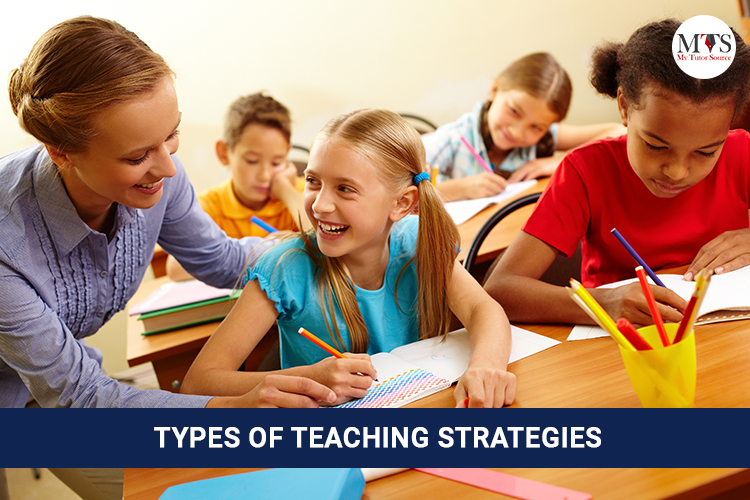
Classroom management
The very first strategy to engage all the students of a class is its management. The etiquette of a class is matters, and so does the management of the whole class. If you start listing down the classroom management strategies, the list will go on because it has its own set of techniques and different strategies to keep the class managed. Before moving to the teaching method, the teacher or an instructor should acknowledge the whole class management rules in dos and don’ts.
Develop an atmosphere of learning
The atmosphere of learning matters the most because no matter how well the teacher or an instructor delivers the lecture, it’s futile if the atmosphere does not support that all students are willing to learn or excited to start the new chapter or topic. So, to develop a learning atmosphere, the expert should get the whole class’s attention and inform them of the facts and purpose of reading the lecture. The more they will show interest in learning a subject, the more they will learn.
Celebrate achievements
Teachers should assign certain achievement levels with a reward to keep the whole class motivated to learn and do better. And the reward could be anything like the winning student will display their work in the school assembly or get to read the whole chapter and get candy from their teacher in return. The celebration can be small or big, it doesn’t matter, but the outcomes of celebrating success will make huge positive differences in a student’s life.
This teaching strategy is mostly used by the primary or secondary level student teachers to motivate and build students’ confidence. Teachers who make use of this strategy more often prepare the future winners. There is no failure. Only feedback. – Robert Allen
Flexible seating
The appropriate seating in the classroom that keeps the students comfortable is the utmost teaching strategy. Here the flexible seating of both the teacher and the learner matters. Institutions of all levels should follow many flexible seating ideas . Because if the students are sitting uncomfortably, then they will not be able to focus on the lecture.
It is more of an institution’s duty to take care of students’ sitting comfort and posture because students spend a lot of their day at schools or colleges.
Active learning
Active learning strategy is one of those strategies that not only help the students but the teachers too. The discussion break between the lecture and asking students to submit the clearest point after the lecture keeps the whole class attentive, and it’s called active learning. Their participation makes the teacher understand which part of the lecture has gotten more attention. Such smart tactics or quick questions in between lectures make the student learn better and faster.
Focus on student’s interests
When teachers focus on a student’s interests, it helps them understand the nature of their students way better, and ultimately, they follow the teaching method that can be more effective. And the constructive feedback on what students have done and what they have not mastered helped them determine how they could improve that mastery. This strategy makes the bond of student and teacher strong and improves the learning environment.
‘There is no failure. Only feedback. ’–Robert Allen
Differentiated instruction
One of the most useful teaching strategies is differentiated instruction. In this strategy, the teacher assigns tasks to each student based on abilities and interests. Doing so the students who are struggling will get the proper support or help, and the students with academic skills or capabilities will be assigned tasks that match their caliber. It ensures the dedicated behavior of teachers after knowing everyone’s learning gaps, and no student remains left behind.
Personalized learning
Teachers should focus on personalized learning strategy a bit too much. Students should review their content once learned. Sometimes, students’ queries remain unanswered and make all the students master their studies. Teachers should assign tasks to each individual according to their learning capability and style. This teaching strategy will help students develop reliability, motivation, self-learning, self-advocacy, and self-reflective abilities.
Peer teaching method
The teacher should follow the peer teaching strategy sometimes. It is being said that ‘to teach is to learn twice,’ which is the same case with this strategy. Peer teaching has its advantages and disadvantages, but it is worth pursuing a disciplined class atmosphere as it grows the student’s confidence and enhances communication skills.
“The best answer to the question, ‘what is the most effective teaching method?’ depends on the goal, the student, the content, and the teacher. But the next best answer is, ‘Students teaching other students’.” Wilbert J. MacKeachie
Response to intervention RTI
RTI, or Response to intervention, is one of the general teaching strategies that should be considered from day one of teaching. This strategy is to find out the learning and behavior needs of the students. Teachers should start the intervention process early in each class because the earlier the teacher understands the RTI strategies, the easier it will be to follow a better teaching method.
Project-based learning
Experienced teachers agree on the importance of getting students to recap the information learned during the lesson. And when it comes to project-based learning, it is important to educate students about what they need to learn to complete the assigned project. It is also crucial to get them to engage with the content actively. So, to foster their engagement, it is important to promote project-based learning in groups. Teachers should make the groups of students quite carefully and selectively as each student’s learning style and ability vary.
Classroom technology
Classroom technology is the best teaching strategy a teacher can use to keep the whole class engaged. This strategy can be used at any level or year of education because students get excited when they have to experience something new for the first time. Video lessons, virtual trips in geography or history class, animations to help kids learn basic skills, and many more adapt to this teaching strategy. Moreover, smart whiteboards, projectors should be used in classrooms.
Blended teaching and learning
In this modern era, teachers should go for a blended teaching strategy. It is a blend of online and offline teaching and uses digital strategies. Some students hesitate to speak up in the class, so blended learning works best for them. They contribute to an online class. Teachers like the blended teaching and learning strategy because it ensures that all voices are heard.
Humor in class
The use of humor should be one of the important teaching strategies, as dry lectures make the students feel bored and tiring and ultimately makes them lose interest. In such cases, a pinch of humor will not harm anyone. But teachers should be smart enough to quickly change the atmosphere of class back to lessons from fun. A comfortable and cozy class environment captures learners’ attention and results in better understanding and active learning.
Inquiry-based teaching
Interactive teaching enables students to be instructed by actively involving them in their learning process through regular teacher-student interaction, student-student interaction. And taking some time out of the class for inquiry-based questions helps improve students’ life skills like communication and problem-solving. The quality of questions matters a lot, and a teacher should ask the students to inquire with subject-based questions or other appropriate questions. However, the inquiry-based teaching strategy has guided inquiry, structured inquiry, open inquiry, and confirmation inquiry. These all promote the use of long-term memory of both teachers and learners.
Class gamification
It is observed that lessons learned while playing stays long in the student’s mind. This teaching strategy keeps the students more engaged and active in the class. Play and learn techniques should be in each teacher’s teaching method list. Age requirement shouldn’t be the barrier because class Gamification builds and improves the essential skills. A teacher can play any games to teach the basics like mind games, math multiplication games, problem-solving games, language learning games like ESL games , and many more.
Gamification has a future in education, and teachers or instructors should effectively use this strategy.
Convergent and divergent thinking
One of the main teaching strategies that all teachers should be aware of is two thinking methods: convergent thinking methods and divergent thinking methods. Teachers should educate their students about its difference as convergent thinking means there are multiple ways to reach one solution. On the other hand, the divergent teaching method makes the students learn and understand the base concepts to solve the given question or problem.
If the teachers and students know these differences, learning will be easier and better.
Problem-based learning
One of the essential teaching strategies a teacher or an instructor should follow is problem-based learning. They should prepare a list of problem-based open-ended questions before a class and ask the class to solve them in groups or teams. This technique helps in developing and improving the transferable and teamwork skills of students, respectively.
Media literacy
Students need to be educated about all the things happening around them. Like nowadays, students are very active on social media and get influenced quite easily. It’s the responsibility of the teachers to guide their students and understand what they are consuming from these platforms. Media literacy lets the students critically think and talk about the changes and innovations. Teachers should follow media literacy activities to bring out the creative side of students.
Visualization
Introducing visualization in class is the most advanced teaching strategy that institutions and teachers can use to make the students understand the textbook content with visuals and the real world. It lets the students experience the world while sitting in their classrooms. But again, it is just another strategy to keep the class engaged. The teacher has to play the main role, Bill Gates has said it too:
“Technology is just a tool. In terms of getting the kids to work together and motivating them, the teacher is the most important.”
Cooperative learning
Teachers should work on cooperative learning strategies in class, once a week at least. There are many ways to follow this strategy, such as solving mathematical puzzles, quick fraction questions, performing science experiments, short drama sketches, group presentations, or frequently asked question-answer sessions among students of the same class. This teaching strategy improves the verbal skills of students.
Behaviour management
Just like teaching methods, teachers should be acknowledged properly about the behavior management teaching strategy. Mutual respect of teachers and students is important to keep the class’s productive learning and disciplined environment. Institutions or teachers should reward students based on their behavior during class and overall interaction with their teachers and fellow mates. Teachers should be strict with this strategy because a noisy, disturbed, or undisciplined class cannot promote productive learning.
Professional development
Undoubtedly, teaching is a challenging job because you have to deliver the same knowledge to students with different mindsets and caliber simultaneously. It gets exhausting sometimes. To keep the teachers motivated and engaged, they should attend professional development seminars and people in the same field. These will keep the teachers updated about the new teaching tools, technologies, methods, and strategies.
How teacher should prepare for a lecture
Even after understanding the teaching strategies and teaching methods, teachers should prepare themselves before delivering a lecture. Just like a student rehearsing before giving a presentation. Because teachers too are presenting themselves and it is their job to keep the attention of the whole class throughout the lecture. So, to make the lecture qualitative, teachers should keep in mind that the lecture should not be too long as it exhausted the students and lost their attention. The whole theme and the purpose of studying certain topics should be explained before teaching, the teachers should use maximum examples or illustrations to make it easy to understand, usages of approaches and fluency of lecture should match with the student’s existing knowledge, so they relate to it and understand more clearly.
Other than considering these points, the teacher should make notes and rehearse the follow of lecture in advance, checklist the important points, keep all the relevant textbooks, tools, or other things prepared which need to be utilized during the lecture, pick the teaching strategy or teaching method that will go with the topic. Meanwhile, the teacher should also ensure that if all the students can see or hear him clearly, he should use the entire why, how, tell, and show techniques to explain the lecture or the assigned topic.
Lastly, class discipline matters a lot, and teachers should already tell the students to write down the question if any crosses their mind during the lecture, and in the last 15 minutes of discussion, they can ask freely one by one. And it is how the discipline of class and the flow of the lecture will not be disturbed. And if all the students have not got their answers due to a shortage of time or any other reason, it’s the teacher’s responsibility first to solve the queries the other day and then teach a new topic. That’s the complete preparation process of a teacher before delivering a qualitative lecture.
Here we summed up the difference between teaching strategies and teaching methods that all teachers should know. Knowing these teaching methodologies and strategies will make the classrooms a more creative and dynamic place for students to get qualitative education; furthermore, if you are a teacher and learning new teaching strategies or methods from this page, then make sure to use them in your classroom.
In this rapidly changing world, teachers should be given proper guidelines to transform the smart, creative, and tech knowledge into their students. And the personality of the teacher should inspire the students to learn from them and be a better addition to this world. The truth is teaching is the profession that teaches all the other professions, so educational institutions should invest in providing proper guidelines on types of teaching methods and teaching strategies from time to time to keep their teachers updated to the modern world.
Education is our passport to the future, for tomorrow belongs to the people who prepare for it today. Malcolm X
Find Top Tutors in Your Area

LATEST POST
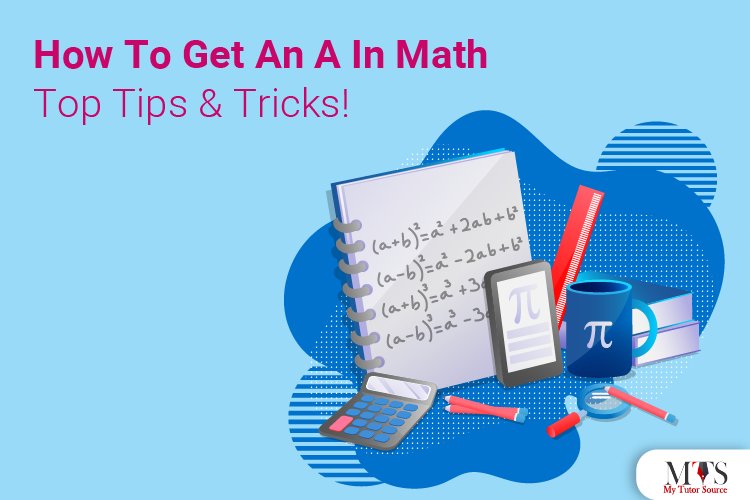
- How To Get An A In Math? Top Tips & Tricks!
April 01 ,2024
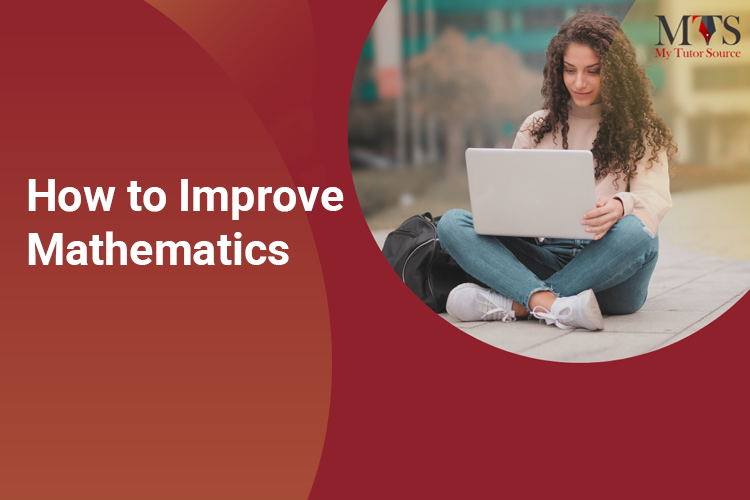
- How MTS tutors can help you in improving your Mathematics

March 21 ,2024
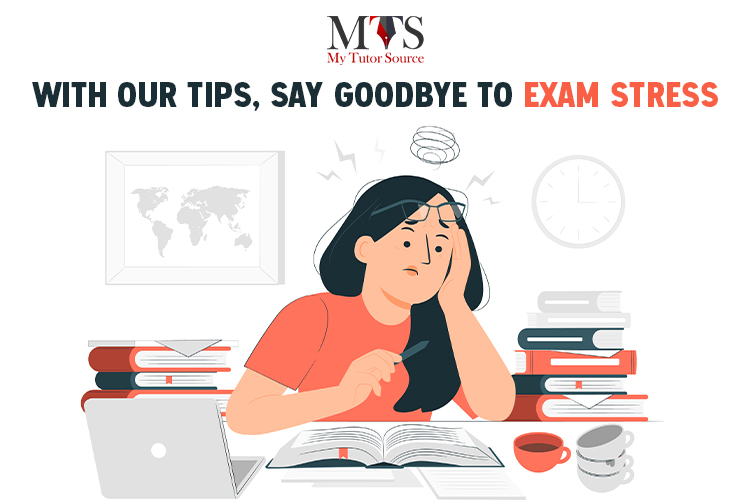
- How Can Students Deal With Exam Stress?
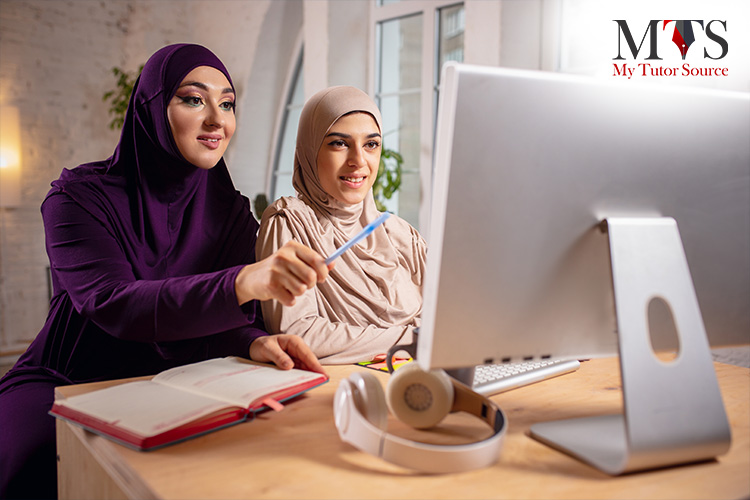
- How MTS Home Tuition in Dubai Makes a Difference
March 20 ,2024
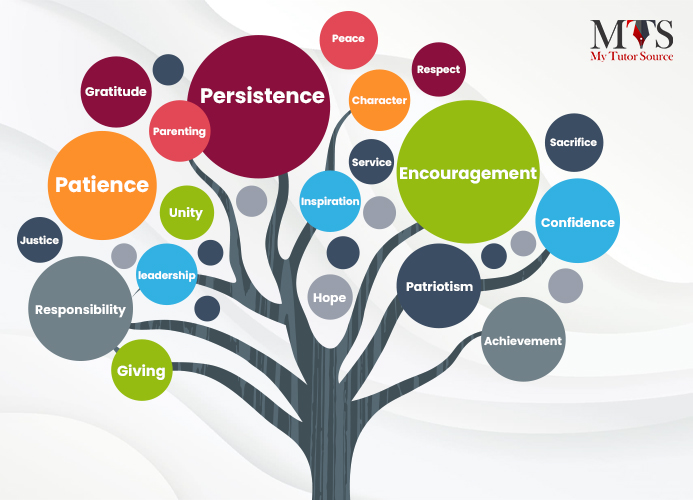
- The Importance of Moral Education For Students
March 19 ,2024
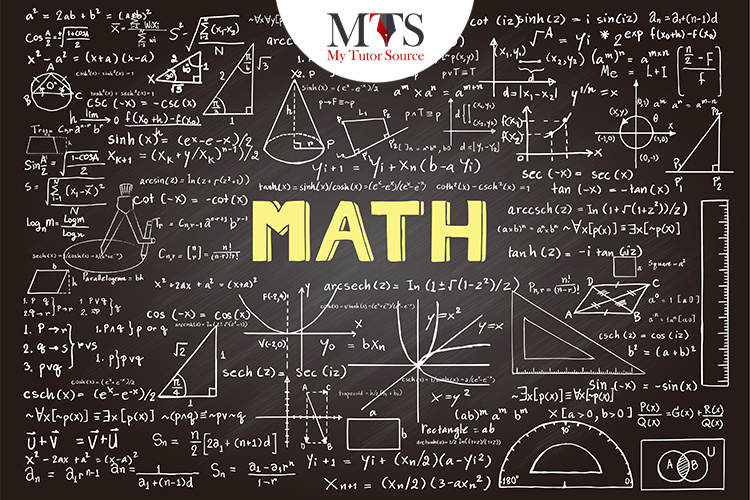
- How to Develop and Sharpen Your Mathematical Skills?
March 08 ,2024
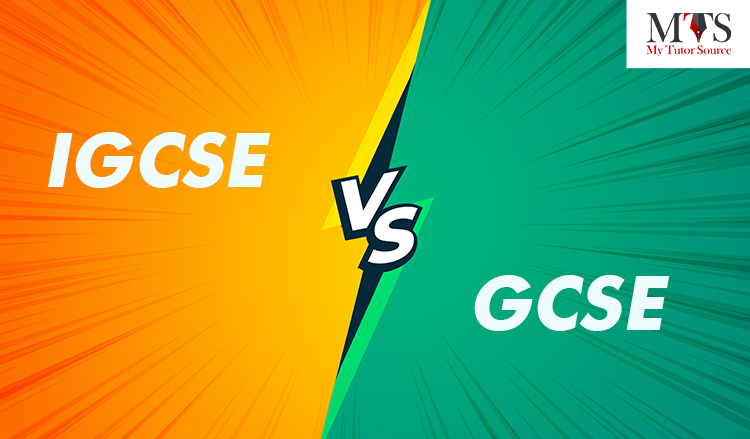
- IGCSE vs GCSE Critical Facts & Guidance for Students
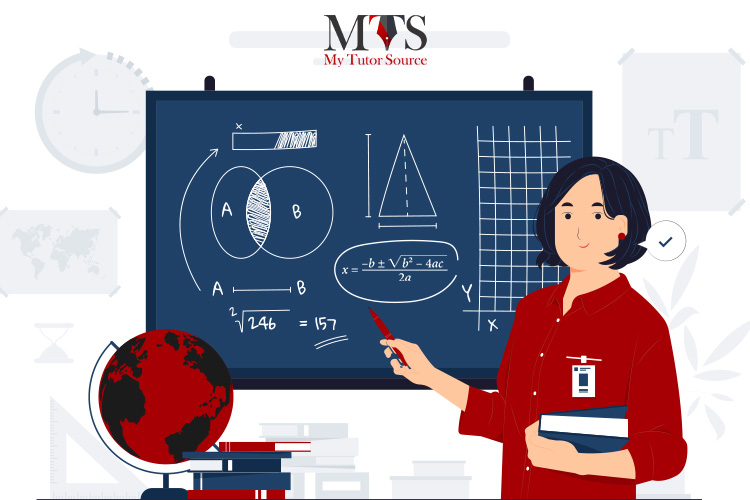
- Choose the Right Math Tutor for Your Child
March 04 ,2024
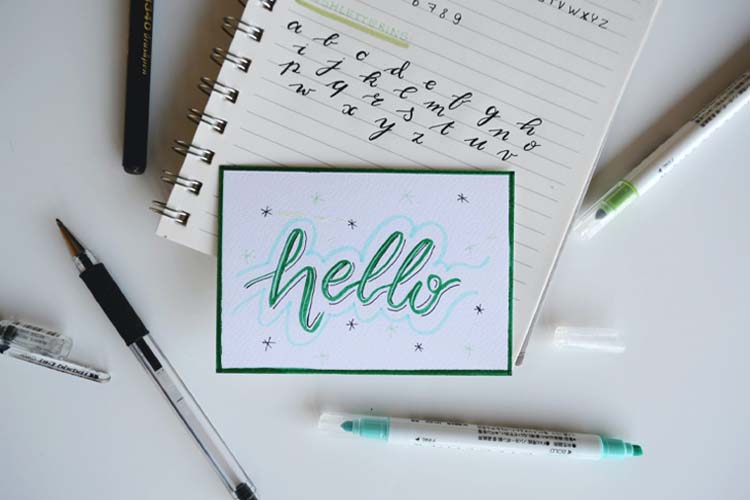
- English Greetings for English Learners
December 14 ,2023
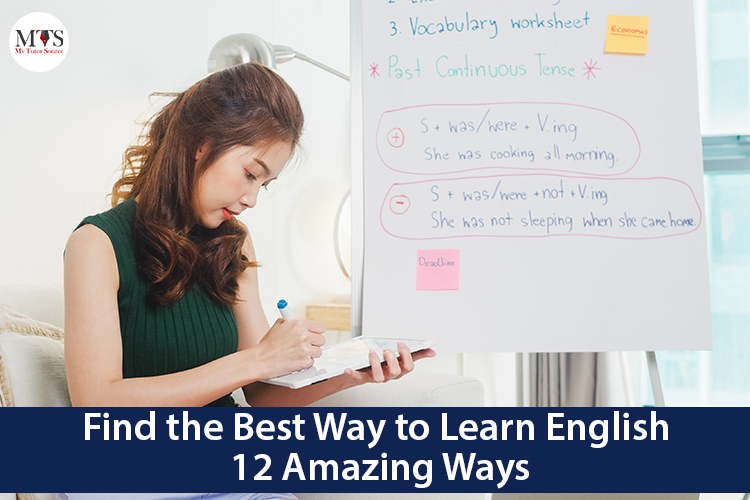
- Find the Best Way to Learn English | 12 Amazing Ways
December 13 ,2023
Recent post.
- Communication
Offer Ends in
Hire an Expert Tutor in Just $9.8/hr
Form Submitted Successfully
No, I Don't Want to Avail This Offer
- Utility Menu
- Writing Center
- Writing Program
- Guides to Teaching Writing
The Harvard Writing Project publishes resource guides for faculty and teaching fellows that help them integrate writing into their courses more effectively — for example, by providing ideas about effective assignment design and strategies for responding to student writing.
A list of current HWP publications for faculty and teaching fellows is provided below. Most of the publications are available for download as PDF files. If you would like to be added to the Bulletin mailing list or to receive printed copies of any of the guides listed below, email James Herron at [email protected].
HARVARD WRITING PROJECT BRIEF GUIDES TO TEACHING WRITING
OTHER HARVARD WRITING PROJECT TEACHING GUIDES
- Pedagogy Workshops
- Advice for Teaching Fellows
- HarvardWrites Instructor Toolkit
- Additional Resources for Teaching Fellows
Maths Tutoring Built for Schools
"This is one of the most effective interventions I have come across in my 27 years of teaching."
Hundreds of FREE online maths resources
Daily activities, ready-to-go lesson slides, SATs revision packs, video CPD and more!

The Most Effective Teaching Strategies To Use In Your School: Evidence Based And Proven To Work
Anantha Anilkumar
Gather a room of teachers together and they will give you as many teaching strategies as there are topics in the curriculum.
This article introduces the 13 most important teaching strategies for all primary and secondary schools. These teaching strategies have been proven to work in schools like yours to improve learning outcomes and student engagement. They are also the ones that we use every week with the thousands of pupils we teach in our online, one-to-one maths interventions. We then consider 7 additional popular teaching strategies and 6 learning strategies that your pupils should know about to empower them to move their learning forward as independent learners.
Teaching strategies taken from the best of UK education research
In the last 5 years, there has been an increasing influence of large-scale research and evidence on the education sector in the UK. We have learned more about how children learn, and consequently how we can better teach them.
Whether that’s a greater awareness of the EEF Toolkit and their randomised controlled trials, the growing ResearchEd movement, or even just the vibrant #edutwitter community, many more teachers now are taking their professional development into their own hands.
More teachers than ever are aware of John Hattie’s ‘Index of Teaching and Learning Strategies’, and are wary of implementing new instructional strategies unthinkingly; no one wants to be stung by another ‘learning styles’ waste of effort.
But even when you know there may be better and more efficient ways to develop your students’ understanding, choosing which of these teaching strategies to start with and how to integrate them into learning activities can be a challenge. This article aims to guide you through this.
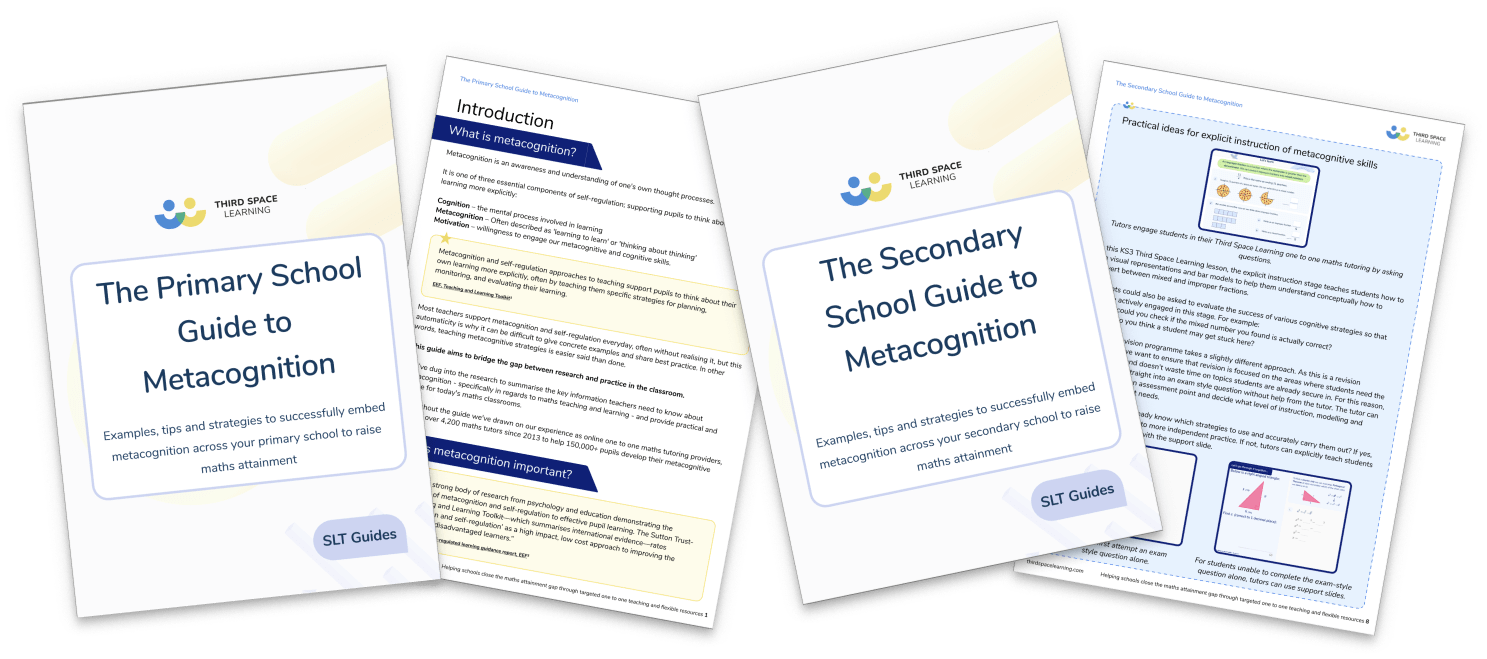
The Ultimate Guide to Metacognition
Step-by-step guidance to supporting your students to develop metacognition with practical strategies for the classroom
What are teaching strategies?
Teaching strategies are teaching methods and techniques that teachers will select and deploy to support their pupils or students through the learning process. A teacher will choose the teaching strategy most suitable for the topic being studied, the level of expertise of the learner, and the stage in their learning journey.
In one single lesson, a teacher may use many different teaching strategies to work towards different learning goals. The most effective teaching strategies are those proven to work over large-scale trials. There is no requirement for a teaching strategy to be innovative, although of course some of them are.
List of teaching strategies for primary and secondary schools
These are the 13 most important teaching strategies that you should have in your teaching toolkit.
No-one is suggesting you will use them in every lesson, but an awareness of what they are, when to use them and the results you can expect is essential to develop your practice.
And of course, if you’re a school leader, or responsible for CPD in your school, knowing what’s current pedagogy and evidence-backed is key so that you can make an informed choice the next time somebody suggests implementing a new or innovative teaching technique.
We recommend all teachers stay up-to-date by reading educational blogs and listening to the best educational podcasts , as well as engaging in professional debate and drawing on the wealth of knowledge sharing on social media.
1. Connect with learners
The basis of all good teaching is an understanding of your pupils and their learning needs. Allied to this is the connection you establish and maintain with pupils.
The relationship between teacher and student is a vital element of the learning experience. Take time to get to know a new class from the first day, and understand what motivates them and their barriers to learning. This is an often overlooked teaching strategy.
In Third Space Learning’s online one to one maths intervention, teachers can inform tutors of any special educational needs before sessions begin so all students can be appropriately supported by their tutor from their very first session.
Additionally, students complete diagnostic questions which not only helps to identify misconceptions and gaps in pupils’ learning but also asks about students’ hobbies and interests. Tutors can use this information to adapt and personalise sessions to engage pupils further. Unlike some other online providers, pupils receiving tutoring with Third Space Learning also have the same tutor every week allowing them time to build and nurture positive relationships.
Read more: How to Support a Child with Autism in the Classroom
2. Appropriate use of summative and formative assessment
The first stage here is making sure you know the difference between formative and summative assessment . It may sound obvious, but you’d be surprised how many teachers don’t use each appropriately.
To cover them quickly:
Summative assessment refers to an assessment that takes place after a block of work has been completed, whether this is a term or a year. They are best thought of as assessments of learning.
Formative assessments are those that take place day-to-day and are used to gauge pupils’ understanding of a topic – they are assessments for learning. Formative assessment is often used in a diagnostic capacity, to help us identify whether pupils are struggling with a topic in the moment. This then guides and adapts our instruction during the lesson, to better meet children’s needs.
Read more: Adaptive teaching
Diagnosis of children’s gaps using formative assessments
We advocate the use of these kinds of diagnostic assessment to identifies a child’s misconceptions. Usually this is best achieved through a set of multiple choice questions.
As well as the correct answer, we can include multiple distractors – answers that are incorrect based on a misconception a child may have e.g. around multiplying. If a child chooses an incorrect answer therefore, we can easily identify exactly where their thinking has gone wrong.
You can download our sample diagnostic quizzes (all including distractors and explanations of them) for free.
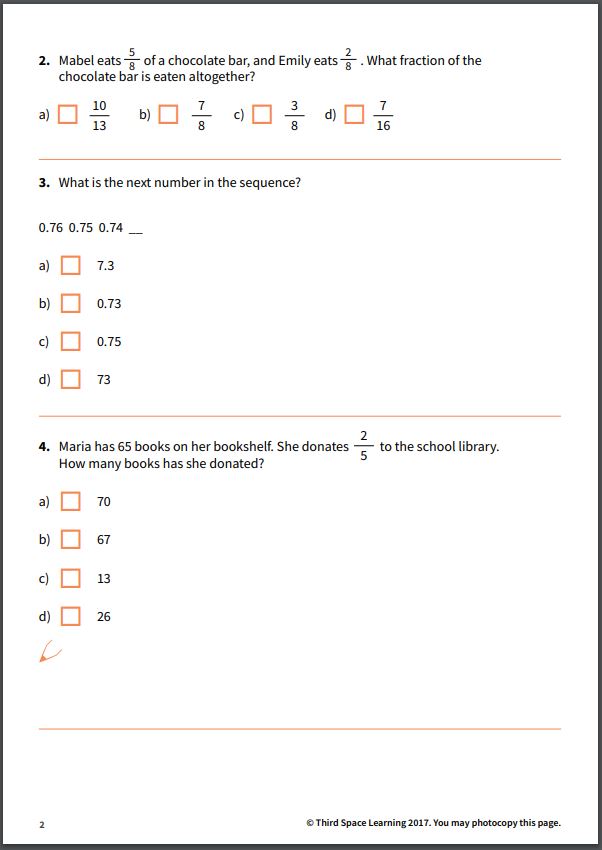
For pupils on our one to one maths interventions , we use a diagnostic assessment, which we call our ‘kick off quiz’ to understand pupils’ learning better.
This diagnostic assessment is responsive based on answers to earlier questions. This helps us to clearly identify not just misconceptions and weaknesses, but also where a child’s strengths lie.
All of this ensures we can plan a sequence of lessons to make the most impact on pupil progress.
3. Teach the vocabulary
With the new focus in the curriculum on knowledge organisers, there’s no excuse for children being without the relevant topic vocabulary. They need the words to be able to create the thoughts and the sentences to confidently speak about a given topic.
This is why our tutors will always talk through any specialist maths words at the start of a lesson with their pupils, explaining any new terms and checking for understanding of previously covered ones.
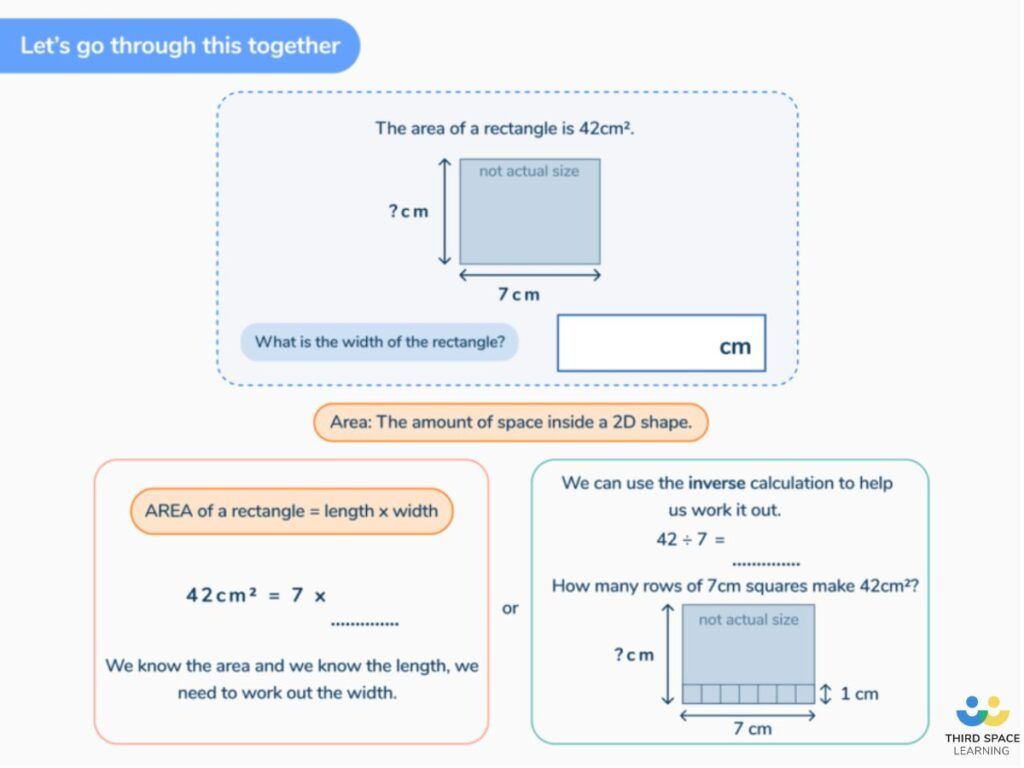
We recommended co-creating your maths vocabulary lists with your pupils. This Maths Vocabulary List is a great start.
4. Explicit instruction
Also known as direct instruction, this teaching strategy is highly teacher-led, and focuses on frequent questioning and guided practice to help pupils learn a topic.
The backbone of explicit instruction is the use of the worked example in an Example-Problem Pair . This involves demonstrating a worked example in its entirety in silence alongside a problem that pupils will then attempt.
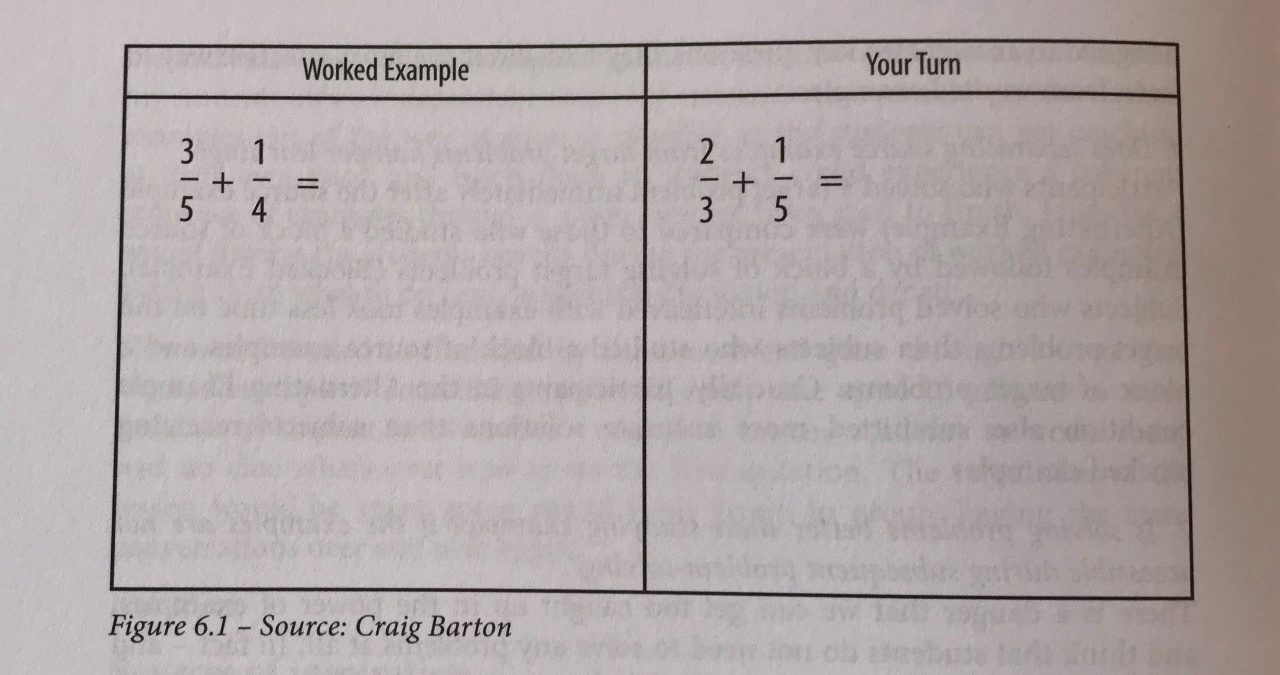
Silence is important in order to ensure pupils’ attention is not split between the example and the spoken explanation, making it more likely that both will be more fully absorbed and retained.
A pupil on a Third Space Learning’s online maths intervention programme will necessarily have all other distractions eliminated so they can focus entirely on the information on their screen and what the tutor is asking them to do; tutors can present a worked example in real time in a learning environment without any visual or auditory disruptions.
5. Effective questioning techniques
While we are all aware of the importance of questioning as a tool to gauge pupils’ understanding of a topic, there are definite techniques to improve the efficacy of your questioning in the classroom .
Ask questions such as “Are you sure?” and “How do you know?”
This encourages pupils to engage in some basic critical thinking to establish how confident they are in an answer and why .
Ask questions such as “Is there another way?”
These questions help to highlight where multiple methods to derive a solution may exist and promote thinking, metacognition and problem solving skills.
Our tutors encourage pupils to verbalise their reasoning and ask questions to ensure pupils have really got to grips with the topic at-hand. Questions such as those below come up frequently during our sessions:
- “How do you know that answer is right?”
- “Can you tell me how else you could work it out?”
- “What do you need to do first to answer this question?”
Goal free problems are another questioning strategy worth considering using in your classes.
6. Deliberate practice
One of the most effective ways of introducing new concepts to a class, deliberate practice involves breaking learning down into a series of sub skills, each of which is deliberately practiced in turn.
The 5 steps involved in deliberate practice are:
- Isolate the skill
- Develop the skill
- Assess the skill
- Final performance
- Retrieval practice later
You can find a full explanation of each of these stages in our blog post on deliberate practice in education .
But as an example, when teaching long division method at KS2 we might use deliberate practice thus:
- Identify ( isolate ) each specific sub skill involved in the long division method;
- Practise ( develop ) each of these one by one;
- Assess pupils’ use of these skills before moving on;
- Have pupils put them all together for a final performance – in this case a full long multiplication problem;
- Return to this topic in later weeks and months to check pupils still retain those skills.
At the beginning of every Third Space Learning intervention session, pupils are given a warm-up question which isolates a skill needed for the topic. This enables tutors to conduct formative assessment to ensure pupils have the prerequisite skills and to diagnose any misconceptions.
Then, tutors can personalise the learning journey further to develop the skill at the correct pace and with the correct support to lead pupils towards more independent practice.
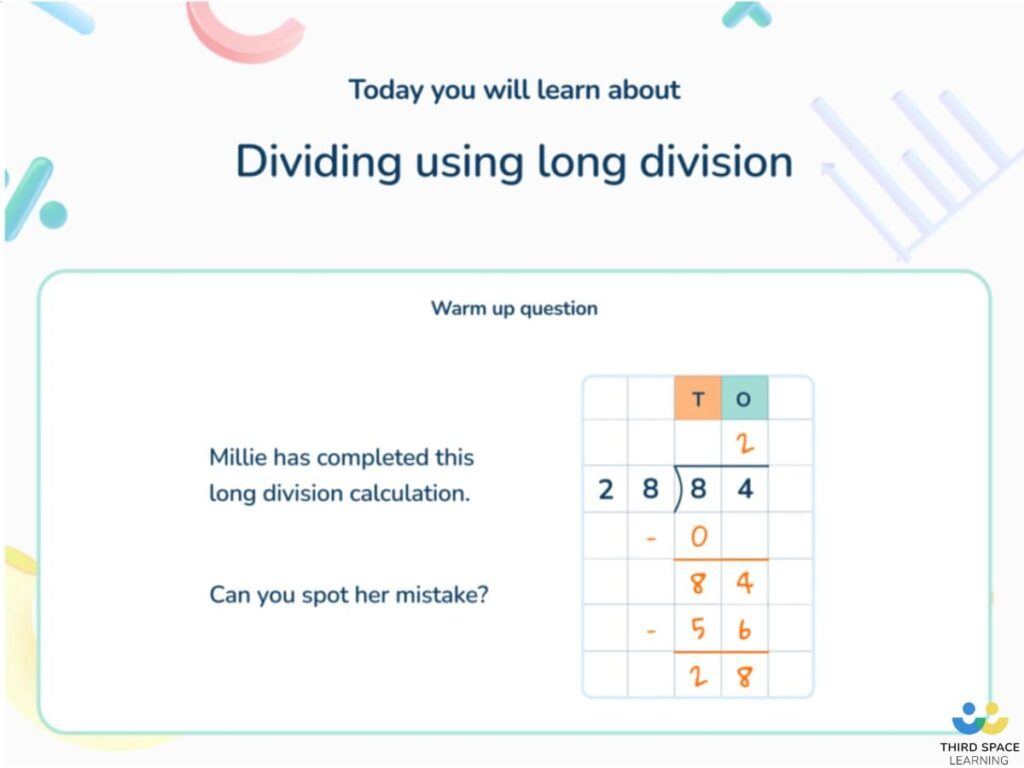
7. Differentiation
Far more than simply “splitting the whole class into small groups based on attainment”, positive and effective differentiation in teaching at the primary school level can be difficult to achieve – poor differentiation strategies risk actually widening the attainment gap we’re attempting to close.
But there are plenty of impactful differentiation strategies ; techniques such as interleaving and phased learning, as well as the use of maths manipulatives and formative assessment, are among those proven to have a beneficial impact on pupils when properly employed.
As we’ve already discussed, formative assessment is a significant aspect of how Third Space’s tutors gauge pupil progress. But we also use several other differentiation strategies during lessons, such as spaced practice, interleaving and a mixture of direct instruction and inquiry-based learning.

8. Classroom management strategies
In recent years, many teachers and schools can agree that ideas around classroom management have developed far beyond punishment and reward.
As the teacher in the room, you must use classroom management strategies to establish and maintain a positive classroom environment that fosters active learning.
One important way to do this is to make a conscious shift to recognise and praise effort, not only achievement.
Be specific in the feedback and praise you give pupils to highlight this. In Third Space Learning’s online intervention, we establish an effort-focussed environment through our praise stickers:
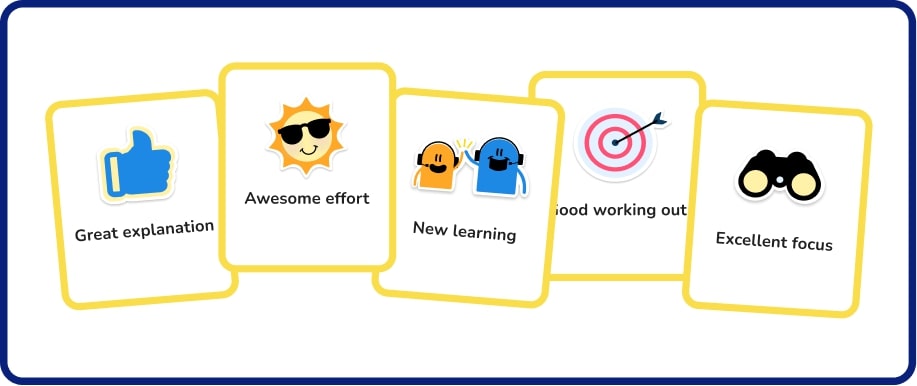
In our sessions, we encourage pupils to talk through their answers and celebrate their mistakes as learning opportunities, ensuring they approach each intervention as another chance to try.
9. Metacognition
Literally ‘thinking about thinking’, metacognition has been recognised by the EEF as one of the most effective, lowest cost teaching strategies there is, with pupil making an average of seven months’ additional progress.
Metacognition in primary schools often incorporates some of the other effective teaching strategies, such as questioning in the classroom – “How do you know?” not only asks pupils to justify their solutions, but has them thinking about their own thought processes for deriving that solution.
Teaching pupils how to learn maths , plan, monitor and self-evaluate their learning also improves pupil motivation and encourages them to work harder in lessons. Metacognition is also one of the most effective intervention strategies for schools .
All our tutors are trained to use a variety of metacognitive strategies as standard during sessions, and we provide pupils with numerous moments for self-reflection both during and after sessions.
10. Personalised learning
Evidence shows that pupils are more likely to engage with learning when is targeted to them and appeals to their interests.
This may be difficult to achieve early on – especially with a full class of 30 pupils – but as familiarity and rapport builds throughout the year it should become easier to make activities and even questions more personalised to individual children.
At Third Space Learning, personalisation is built into our programme from the start. All of our pupils undertake an Initial Diagnostic Assessment before they begin their sessions, which identifies their strengths and weaknesses in maths. This informs the sequence of lessons to create a personalised learning journey designed to address learning gaps.
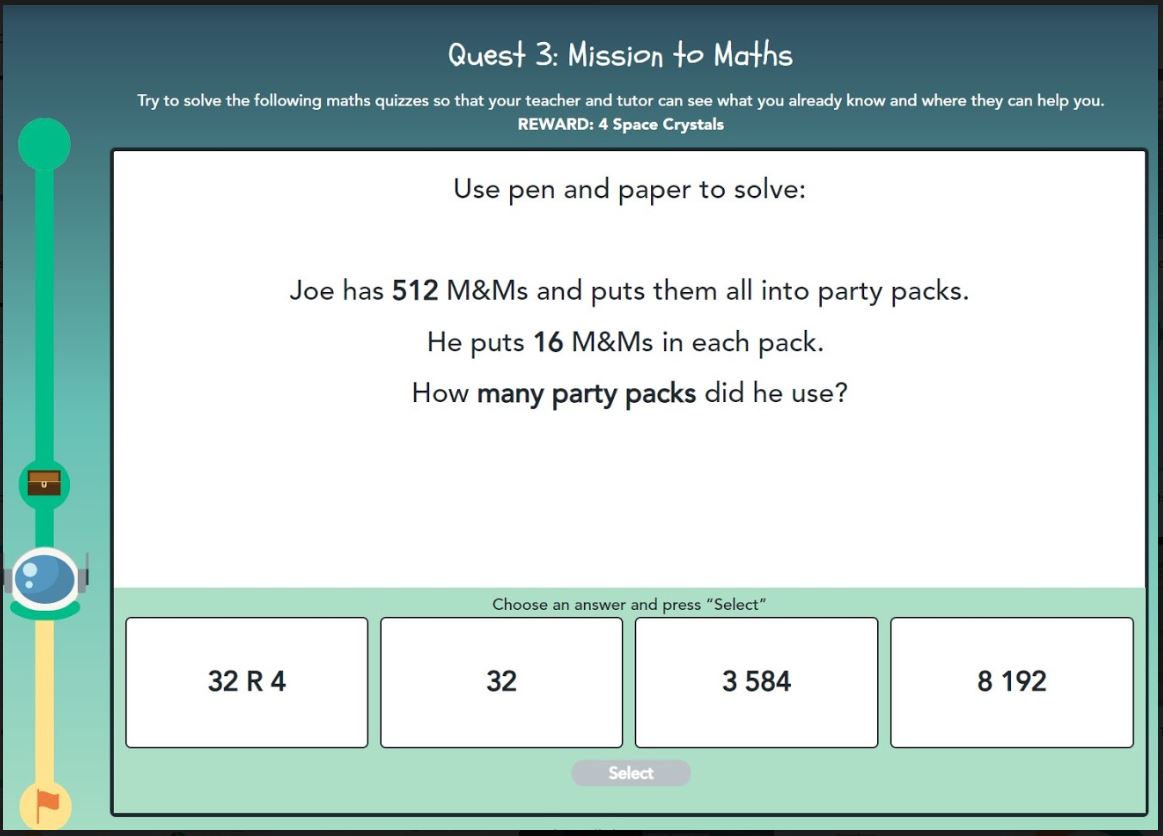
Our tutors then build on this by adding a personal touch to those lessons, incorporating pupils’ interests into lessons with ease thanks to our online platform.
11. Experiential learning
Experiential learning is the use of real-world scenarios to engage students and promote learning beyond worksheets and textbooks.
Often, pupils will work on these real-world scenarios through cooperative learning, working with other pupils. This can have an excellent influence on positive relationships in the classroom and develop wide ranging communication skills.
However, the EEF notes that the impact of group work can vary widely, and that to make it most effective teachers should focus on well-structured tasks that promote talk and interaction between pupils.
12. Explicitly teach thinking skills & problem solving techniques
Mathematical problem solving techniques don’t always come naturally to pupils; while metacognitive strategies such as those mentioned above make it more likely that pupils will be able to apply critical thinking to a problem, there is no set way to ensure that this will happen.
Research into the topic suggests that context-agnostic deployment of problem solving techniques only occurs once pupils have secure domain knowledge, and the opportunity to practise.
Without these, pupils often fall into the trap of attributing importance to the so-called ‘surface features’ of a problem, which we naturally discount as irrelevant to the actual maths involved.
That said, explicit teaching of thinking skills is still of considerable importance; once domain knowledge has been (relatively) secured, teaching pupils how to recognise and focus on the ‘deep structure’ of problems enables them to apply their knowledge more effectively.
Try using several ‘Same Surface Different Deep’ SSDD problems in lessons – where the surface features of the questions are the same, but the deep structure varies (e.g. division, multiplication, addition etc.).
These questions eliminate any confusion regarding surface features and thus allow pupils to focus on differentiating the deep structures.
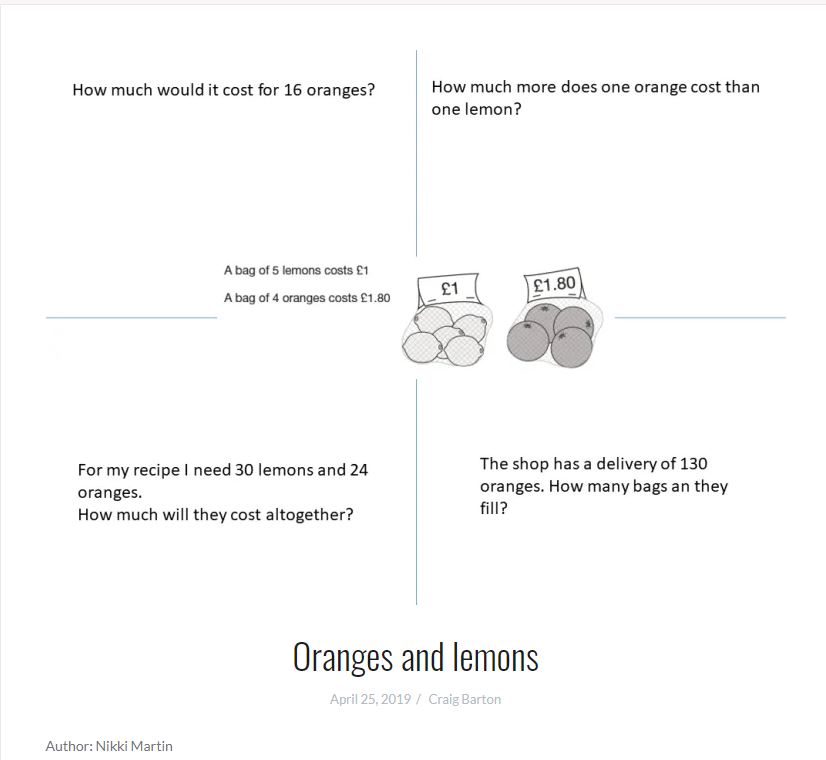
In the run-up to the SATs , your Year 6 pupils may unintentionally revert to focusing on the ‘surface features’ of questions when encountering the reasoning papers.
To help combat this, make sure you and they are aware of the different types of maths reasoning questions in year 6 to help them identify not just the maths problem solving techniques they need to know, but the types of questions that are likely to require certain techniques.
13. Modelling and scaffolding
Modelling is an essential first stage of learning. Students can see problem solving and complex processes broken down into simple steps. Additionally, teachers can verbalise their cognition at each stage.
This teacher-led modelling can introduce new concepts without resulting in pupils’ cognitive overload . Once pupils are familiar with the process, they can work towards more independent practice.
“I do, We do, You do” is a popular method to achieve this and what Third Space Learning uses to support pupils towards independent practice. It is an effective method as it allows teachers and tutors to use scaffolding to flexibly provide enough support and challenge for each individual pupil.
Scaffolding
Scaffolding is the careful use of support to novice learners to enable them to complete a task successfully. The aim of scaffolding is to gradually remove this support so that pupils may eventually work independently.
Scaffolding with support slides
All Third Space Learning intervention lessons make use of modelling and scaffolding method using ‘I do, We do, You do’. Our online platform lends even more flexibility to the scaffolding structure. Tutors can pull from a bank of ‘support slides’ if spending more time on a concept or process is necessary.
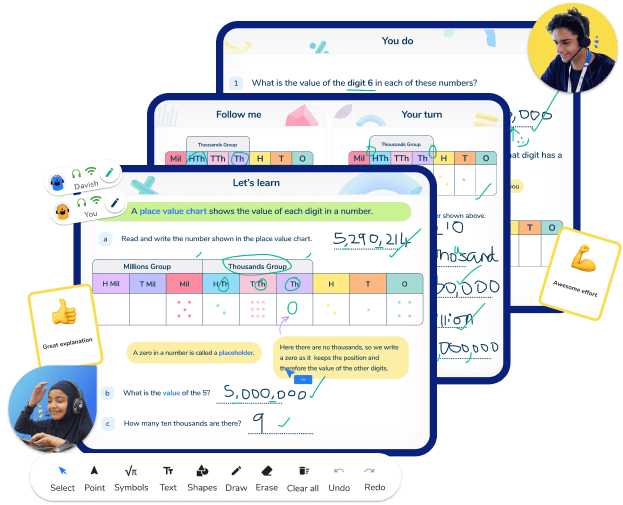
7 additional popular teaching strategies
Those are the 13 most effective teaching strategies but, of course, they’re not the only ones that you’ll use in your lessons. The following list provides 7 additional popular teaching strategies that it’s still important to know about as a teacher – and to understand where they are most appropriately deployed.
1. Classroom technology
There are a growing number of excellent online learning tools, websites, and apps to enhance and complement your teaching however, bringing technology into the classroom is a delicate balancing act. There’s always the risk that technology can be a distraction and that pupils will focus on the tech over the learning. Use your professional judgment to review the latest apps and tools and don’t be afraid to stick with the tried and tested pen and paper!
Read more: How To Do An Education Technology Audit In Your School
2. Blended learning
Blended learning is the combined use of technology alongside traditional classroom learning. It is a valuable teaching strategy that allows pupils to recap and retrieve learning at their own pace and helps to empower pupils to become more independent learners. During the pandemic and resulting school disruption, many schools and teachers were thrust with the challenge of online and blended teaching. Teachers across the UK upskilled quickly and many continue to offer a blended learning approach with homework, recorded lessons, revision videos, and more offered online to pupils in addition to their in-classroom learning.
3. Feedback
Feedback is a well-evidenced teaching strategy according to the EEF. High-quality feedback should give feedback on a pupils performance in relation to a learning goal, and provide information to the pupil on how to improve. Feedback should be:
- Timely – give feedback during, immediately after, or some time after a learning activity, but ensure it is timely and actionable
- Specific – give detailed explicit feedback that clearly explains how pupils can progress
- Provide feedback for both correct and incorrect answers or approaches – give feedback on what or how a pupil did well
Read more: Why My School Banned Marking
4. Inquiry-based instruction
While triggering the curiosity of your pupils for a topic is the necessary first step in inquiry-based learning, presenting them with the opportunity to research and report on the topic is where learning really occurs.
5. Flipped classrooms
A flipped classroom is a teaching strategy where pupils are introduced to learning content before the lesson (for example, through homework, pre-reading, etc.) to prepare for their class. In-classroom time is therefore used to deepen pupils’ understanding through class discussions and activities. This strategy gained popularity in the 1990s and 2000s and with the recent advancements in online and blended learning, flipped learning can be made easier to manage and to share resources in advance of a lesson online.
6. Peer instruction
Peer instruction is linked with flipped classroom learning. Peer instruction also requires pupils to engage with learning materials before class. When they are in the classroom, the teacher sets questions and activities for students to work through in groups. The pupils deepen their understanding through discussion and the teacher can monitor and assess their understanding. Teachers can identify any misconceptions or challenges and address these during classroom time. This approach is not to be confused with peer tutoring, when (typically) an older pupil tutors a younger pupil who may be struggling. However, this can be an effective tutoring approach according to the EEF.
7. Gamification
Gamification is the use of games in learning. This is not only excellent for motivating pupils, but it can also:
- develop working memory, language, and motor skills.
- provide an opportunity for repeated practice and retrieval practice in new situations
- develop number sense
- remove fear or anxiety sometimes associated with new learning
Mathematics can be especially well-suited for gamification as pupils can explore their learning through low-stakes games and puzzles.
- Quality First Teaching Strategies Checklist
- Cognitive Load Theory In The Classroom
- Teaching Bottom Set Maths
- EEF Putting Evidence To Work Report Summary
- Primary School Teachers’ Guide To Learning and Memory
- What Is Variation Theory
- Dyscalculia In Schools: A Guide To Identifying And Supporting Pupils With ‘Maths Dyslexia’
- ADHD In The Classroom
List of learning strategies
Last, but not least, central to any good teaching practice is explicitly teaching learners of all ages about learning strategies. These are the 6 learning strategies we think every student should be familiar with by the end of Year 6.
1. Spaced repetition
Ensuring that learned material is revisited at regular intervals through spaced repetition instead of all at once much later when more of it is likely to be forgotten. For older students, study calendars can be of immense help in the run-up to major milestones such as the KS2 SATs.
2. Retrieval practice
Retrieval is the process of recalling information purely from memory, without the aid of learning materials. Effective retrieval practice helps embed information more thoroughly in our minds, since we no longer need context to recall it.
3. Elaboration
Tied into questioning in the classroom, elaboration puts the onus on pupils to do more than ‘just’ recalling information. The use of open ended questions such as “How did I get that answer” help pupils to make connections between the things they’ve learnt rather than seeing them as several unrelated facts.
4. Interleaving
A wealth of research is now available that suggests the benefits of interleaving – mixing practice of different skills with one another – in helping pupils better identify the necessary strategies to solve different problems. Interleaving with connected topics (e.g. division and multiplication) amplifies this effect. Our Year 6 maths revision programme is built on this.
5. Concrete examples
As maths educators the Concrete Pictorial Abstract Approach is embedded into the way we teach. Within our online tuition, we have many different ways of explaining a topic and as an extension we may ask pupils to come up with their own concrete examples for concepts, based on the examples we’ve used in explaining the concept to them.
6. Dual coding
Combining words and visuals in teaching materials. This isn’t referring to speech (as we established earlier), but having pupils create some kind of visual aid (e.g. a sketch, a diagram) to accompany written text can help them reinforce the concept in their brain in two different ways, making it easier to recall. Anyone who’s created slides for their pupils will be familiar with the challenge of imparting information through words + pictures.
Read more: A Practical Guide To Rosenshine’s Principles of Instruction
- Hattie’s index of teaching & learning strategies and their effect size
- EEF Teaching and Learning Toolkit
- Teaching in Effective Primary Schools: Research into Pedagogy and Children’s Learning (Siram, Taggart et. al) published by UCL IOE Press.
DO YOU HAVE STUDENTS WHO NEED MORE SUPPORT IN MATHS?
Every week Third Space Learning’s specialist school tutors support thousands of students across hundreds of schools with weekly online 1 to 1 maths lessons designed to plug gaps and boost progress.
Since 2013 these personalised one to 1 lessons have helped over 150,000 primary and secondary students become more confident, able mathematicians.
Learn how tutors build rapport or request a personalised quote for your school to speak to us about your school’s needs and how we can help.
Related articles
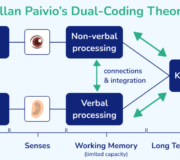
How Dual Coding Can Increase Student Learning: A Guide For Teachers

A Teacher’s Guide To Using Effective Differentiation In Teaching

A Teacher’s Guide To Spaced Repetition And Creating An Effective Spaced Repetition Schedule
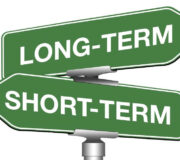
Retrieval Practice: A Foolproof Method To Improve Student Retention and Recall
FREE Guide to Hands on Manipulatives
Download our free guide to manipulatives that you can use in the maths classroom.
Includes 15 of the best concrete resources every KS1 and KS2 classroom should have.
Privacy Overview
Professional Development
Start Teaching
- Login Talk to a Mentor
7 Effective Teaching Methods and Strategies Teachers Should Know

Simran Agarwal
Simran is a writer here at Suraasa and has formerly worked as a Teacher. She is passionate about learning and making a difference through her words.
What are Teaching Strategies and Methods?
- Student-Centric Discussion
- Collaborative Learning
- Flipped Classroom
- VAK Teaching
- Spaced Learning
- Differentiated Instruction
- Dual Coding
Final Thoughts
Teachers are undoubtedly one of the most underrated champions of our society. They not only help future generations find a purpose in life but also prepare them for the challenges of a competitive world outside the classroom. However, all the children in this world are unique in their own ways and learn at their own pace. Some may possess quick learning capabilities, while some may be slow learners and need more effort to perform better. Thus, the idea of “one solution for all” does not fit in the field of teaching, Teachers are required to come up with different teaching strategies & methods to ensure equitable learning for students. They should know how to make their classroom engaging for all students. Let’s get into a bit more detail:

Teaching strategies typically refer to the general principles, pedagogies, and management strategies used by teachers in a classroom for educating students in the most effective and efficient way. These are selected on the basis of various factors like the teacher's educational philosophies, demographics of the classroom, and subject areas. According to The Teaching and Learning International Student Survey (TALIS),
“Teachers using different strategies help different student groups and facilitate the learning of different types of tasks”
7 Incredible Teaching-Strategies and Methods for Teachers to use in the classroom?
Using different teaching strategies in a classroom ensures holistic growth of the students and also improves their problem-solving skills and critical thinking abilities. It encourages collaboration and helps them in developing decision-making skills. Here are the 5 teaching strategies that can help students to learn better in a classroom :
1. Student-Centric Discussion
Student-centric discussion is a teaching strategy that allows students to understand more about topics or concepts via collaboration and cooperation. It involves detailed discussion on topics or ideas that eventually boosts students’ confidence, productivity, and implementation skills. It also improves their comprehension, speaking, and listening skills that reflect in their assessments.

Teachers should keep students at the heart of these discussions & should act simply as a feedback provider. The teacher provides the students with guidance for what they are to accomplish in their discussions that day. With each group of students having a facilitator, students should then break-out into discussion groups.The teacher should relocate to a location in the room from which he or she can see and hear all of the discussions. Following the discussion session, the teacher meets with each of the facilitators for a brief meeting to share feedback on the leadership they provided their team that day. These feedback sessions resemble a coaching session rather than a grade review.
Try new teaching strategies with Suraasa & improve your students’ learning & academic performance. Get started today!
2. collaborative learning.
Collaborative learning is a teaching strategy that focuses on encouraging teamwork and partnership. It involves bringing together students with various skills in groups for solving a problem or completing a task. Different minds generate various perspectives and viewpoints that help students understand the concepts better and more effectively.
"Research on collaborative dialogue & student learning has revealed important links between group processes & students’ learning outcomes. In many of these cases, these results have been used to design specific collaborative learning approaches, with encouraging results for student learning. "
states The International Handbook of Collaborative Learning.

3. Flipped Classroom
Flipped classroom is an innovative teaching technique that works in contrast to traditional classroom learning. In a traditional classroom, students are introduced to new concepts and are asked to practice those concepts as homework. Whereas, in a flipped classroom, students learn new concepts in their homes and practise them in school in the form of presentations, debates, or lab experiments. This not only increases students' engagement but also boosts their self-confidence and analytical skills.

Changing the way you teach, every now and then can keep your students excited for your classes. Using these effective teaching strategies & methods is a great way of engaging students into the learning process on a deeper level, enhancing interest and – ultimately – improving their scores.
4. VAK Teaching
VAK teaching stands for Visual, Auditory, and Kinesthetic. It is a very comprehensive teaching strategy that focuses on improved learning experiences using three main sensory receivers. As per transitional beliefs, students tend to use their senses to learn and understand new concepts. VAK teaching allows students to recognise their dominant and preferred learning styles. For example, reading textbooks and taking notes can please visual learners, while teaching a topic to the class can satisfy auditory learners and practical tasks can satisfy kinaesthetic learners.

5. Spaced Learning
Spaced learning is a teaching strategy that makes practising a skill or retrieving information efficient for students. This is one of the best teaching practices a teacher can adopt in his/her classroom. It involves breaking a long course into multiple short sessions or modules and making students understand them with appropriate breaks. This helps students in retaining information better. For example, practising English speaking for ten minutes every day for ten days (100 minutes) is more beneficial than practising nonstop for 100 minutes.

6. Differentiated Instruction
Do your students seem to be falling behind? Do you want to improve their performance? How can you adapt to student Learning needs? This is where the teaching technique of differentiated instruction comes in. Differentiated Instruction entails adapting training to match the needs of each individual student. Whether teachers diversify material, method, products, or the learning environment, the use of ongoing evaluation and flexible grouping ensures that this approach to instruction is successful. For example: Introducing audio books for students who lag with textbook-based learning. Or introducing elements of art to invoke the interest of artistic students into other subjects.

Want to learn in detail about differentiated Instruction? Watch this masterclass for FREE.
7. Dual Coding
Dual coding is combining words and visuals such as pictures, diagrams, graphic organisers with the subject material in order to improve the learning & memory of the student. This teaching strategy still stands today as one of the most robust ways of teaching. With dual coding , you combine visuals with words to convey information that requires less effort to understand to students.

For example: Timeline of a butterfly’s life cycle with visual pictures, or a comic strip outlining the summary of a novel, or making a pros & cons list with diagrams among others. This teaching technique not only improves the retrieval of information in students but also allows them to be creative at the same time. Hence, when challenging concepts and content are supplemented and coupled with relevant pictures, they may become easier to understand.
Final Thoughts
Using different teaching methods and strategies, teachers can educate students better and inspire them to bring a positive change in society. Moreover, these teaching practices & strategies make the students learn new concepts and empower them with essential life skills. If you’re indecisive about the appropriate teaching strategies, you may consider enrolling in programmes like Learning Theories and Teaching Strategies that will help you in implementing the best & different types of teaching strategies to improve overall academic performance, student engagement of your classroom.
Meet Suraasa, the World’s First Career Growth Platform for Teachers.

Keep Reading
.webp)
10 Essential Teaching Skills for 21st-Century Classrooms
Discover the essential teaching skills in education that can help you become a 21st century teacher. Learn what they are and how you can get them.

What an M.Ed Degree Can Do for Your Teaching Career
Explore this ultimate M.Ed degree guide: eligibility, admission process, salary potential, and career advancement opportunities.

Lifelong Learning for Lifelong Impact: Professional Development for Teachers
Discover the importance of teacher professional development for educators and students. Explore pathways and tips for your career growth.
Academia.edu no longer supports Internet Explorer.
To browse Academia.edu and the wider internet faster and more securely, please take a few seconds to upgrade your browser .
Enter the email address you signed up with and we'll email you a reset link.
- We're Hiring!
- Help Center

Strategies in Teaching Academic Essay Writing, Level of Effectiveness, and Instructional Barriers: The Case of Filipino Learners

2023, World Journal of English Language
This study about academic essay writing strategies was conducted in order to propose teachers' lesson guide based on the effective strategies that were ascertained after the investigation. The study used the descriptive-quantitative method of research. The University-approved questionnaire was used to identify the frequency of use of the strategies utilized in students' essay writing activities. There were 126 students and 20 English teachers in Cebu City, Philippines, used as the respondents of the study. It was discovered that the three academic essay writing strategies investigated in the study were always used in both argumentative and informative essay writing, as perceived by the respondents. The first two strategies, traffic light color coding, and planning using informal outline, were found to be very effective in both writing the argumentative and informative essays, while the third strategy, framed paragraph, was also effective to use in both writing the two types of essays. The strategies used, and the students' performance showed a significant relationship. The top barriers in teaching academic essay writing were as follows: teaching essay writing to second language learners, lack of time for explicit instruction, no strategies in place for the part of the students, lack of parental support, and lack of essay structures on the part of the teachers. It was concluded that there were various effective pedagogical strategies that teachers could utilize in teaching academic essay writing. Based on the findings, this study further presents its recommendations.
Related Papers
International Journal for Innovation Education and Research
PATIENCE IGUBOR
Writing is a tool for communication and learning.However, students’ performance in essay writing in Nigeria has been poor. This under-achievement has been traced to ineffective methods and strategies. Literature reveals that most studies focused on innovative ways to improve students’ achievement in essay writing without attention to essay structure-based instructional strategies. This study, therefore, determined the effects of two modes of Essay Structure-Based Instructional Strategies (ESBIS) on students’ achievement in argumentative and expository (cause/effect) essays. The moderating effects of vocabulary knowledge and attitude to essay writing were also examined. The study adopted a pretest-posttest, control group, quasi-experimental design using a 3×2×3 factorial matrix. Two Local Government Areas (LGAs) in Benin City were randomly selected. Three public secondary schools from each LGA were purposively selected while two intact SS II classes were randomly assigned to each of ...
Educational Research and Reviews
Syahrul Munir
Proceedings of the Eighth International Conference on Languages and Arts (ICLA-2019)
Desvalini Anwar
The aim of this empirical study is to explore O level English language teachers' perceptions regarding teaching practices and methods used in teaching English essay writing. The population of study comprised O Level English language teachers (N=131) schools of Karachi. Through simple random sampling technique, data were collected from (n=58) participant schools which forms approximately 44% of the targeted population. Total sample size was n=73 (n=22 male and n=51 female) teachers. To carry out the cross sectional survey of the chosen sample, two instruments i.e., Factors Affecting English Essay Writing for Teachers (FAEWT) and teachers' structured interviews were developed to collect the quantitative and qualitative data respectively. Data were tabulated, calculated, analyzed, and interpreted through SPSS Version 20, in the light of objectives of the study, and the research hypotheses. Central tendency i.e. mean and measures of dispersions i.e. Standard Deviation and t-test were used for testing hypotheses. Results revealed that students were lacking in understanding the principles of English grammar, difficulty in word spelling and use of punctuation marks in writing essays. On the basis of these findings, it is recommended that Cambridge-affiliated schools' management should provide Cambridge professional development training to teachers continually and also provide well-furnished library, language laboratory and classrooms so that teachers can provide quality input to develop students' written discourse. This study plays an important role in contributing to researchers, policy makers, curriculum developers, teachers and students to enhance students' skills of writing an essay with no errors and coherently.
English Language Teaching
Nicola Walshe
This paper tries to shed light on the use and endeavors teachers bear in correcting students writing papers without achieving good results to improve their writing. This theoretical research or reflection of this paper attempts to explore the reasons why some teachers sometimes feel that their teaching of writing is worthless since they spend a lot of time commenting and writing marks on students corrected papers and still many students do not get better or improved.
Janet U . Mejos
Writing is one of every vital macro skill in English. It has been a part of the assessment tool utilized by the teachers in assessing the performance of the learners. However, students encountered problems in expressing their thoughts in writing, others don't have unity or coherence of their ideas, as well as the grammars and writing system even they are given enough time to answer. This study identified the level of performance in writing an essay among secondyear Bachelor of Secondary Education major in English students in terms of knowledge of conventions, clarity and coherence, and rhetorical choices. It described the profile of the students in terms of age, sex, and writing experience. A descriptive design with Four-Point Likert Scale, Scoring Guideline/Rubric, Frequency, Percentages, Mean, and ANOVA were utilized. The findings revealed that the respondents' age is 19-20 years old, the majority is female, and onehalf of them have no writing experience. The extent of the performance in writing an essay among them was "competent." There is no significant difference in the level of performance in writing an essay of the respondents when grouped according to their profile. Moreover, the study's findings suggest that the importance of going back to the basics is necessary emphasized. The basics or the foundational lesson in writing will be considered from the Parts of Speech to the making of sentences and paragraphs. Hence, it is suggested that students will practice writing and reading as often to widen their perceptions, knowledge and to improve their grammar, technicalities, and content organization. Also, teachers are encouraged to incorporate basic skills in writing an essay in the different courses and may utilize various approaches and strategies suitable to the needs of the learners. Furthermore, the administrators may provide projects and programs that could cater to students' performance in writing like conducting seminar workshops and training in writing for students.
JEELS (Journal of English Education and Linguistics Studies)
Writing essay is still considered difficult for English students to master. The students are expected to be able to express their ideas correctly without making any chance of messages to be misinterpreted by the readers; therefore, they have to know and use the best or the most appropriate ways to write. The purpose of writing this article is to introduce learning strategies and the possibility of training of learning strategies in writing essay to English students. The first strategy is integration of strategy with the process of writing essay: pre-writing, writing draft, and post-writing activities. The second is training learning strategies, such as memory, cognitive, compensation, metacognitive, affective, and social strategies to students to make writing essay easier, faster, more enjoyable, more effective, and more self-directed to achieve the desired result in their writing. To get better result of improvement, the model of training of learning strategies in writing essay should be applied and developed based on the appropriateness of teachers, learners, subjects, and situations.
Mansoor Ali
AL-ISHLAH: Jurnal Pendidikan
Naniana N I M R O D Benu
Academic wiring is one of the essential skills in academic writing, and it is vital to support students' self-development through opinion writing, grant essay writing and others. This study explores students' difficulties in writing English academic essays and the dominant challenges by using a mix-method approach. The qualitative is used to collect data, while the quantitative is used to find the difficulty percentage—the data analysis uses indicators from Brown (1999). The sample of this study was 30 students in the fifth semester of the English Education Study Program at Universitas Kristen Artha Wacana. The results showed that students still experienced serious difficulties in four aspects of academic writing; content, organization, discourse and mechanics. The most dominant difficulties (97%) were found in; 1) thesis statement; 2) related ideas; 3) development of ideas; and 4) use of description/cause and effect, comparison/contrast; 5) effective introduction; 6) topic ...
European Journal of Foreign Language Teaching
Bui Thi Thu Trang
The purpose of this study was to investigate the difficulties faced by English-majored students in writing academic essays. To collect the data for the investigation, the sample involved was twenty-seven English-majored students who have been studying English as their specialization at a public university in Vietnam. The instruments of this study conducted a mix-method as a qualitative and quantitative approach. To achieve the purpose of this study, the questionnaire was administered as the quantitative data collection and the semi-structured interview as the qualitative data collection. Then, five of the total participants were randomly interviewed to gain insight ideas of the difficulties that they face when writing academic essays in their writing course. The results of this study demonstrated that the majority of students had obstacles related to insufficient linguistic knowledge namely, lexicon-grammar, vocabulary, and the structure of sentences. The findings from the interview...
RELATED PAPERS
International psychogeriatrics
PRABHA SIDDARTH
Zeremoniell als höfische Ästhetik in Spätmittelalter und Früher Neuzeit
Friedrich Polleroß
Jesús Antonio Lázaro Bello
Rajendra shirsat
Oxford Handbooks Online
Paul Grootendorst
달림포차ꖕ【d a l p o c h a 4 . n e t】ꖕ계양오피ꗒ계양건마
olli janurganteng
International Journal of Pharmaceutics
zahoor ahmad
Manuela Avirović
Jackson Ronie Sá Silva
Artificial Intelligence and Law
giovanni Sartor
International Journal of Biochemistry Research & Review
Giorgia Maria Annoscia
Dalton transactions (Cambridge, England : 2003)
Miki Hasegawa
Journal of Renewable Materials
Noor Kadhim
Proceedings of the National Academy of Sciences
peter morel
mohd ramdhan mohd khalid
Tadelech Sisay
Carlos Ventura
The American journal of medicine
Jean-Christophe Merle
Interference: Journal of Language, Literature, and Linguistics
Juanda Juanda
Knowledge and Management of Aquatic Ecosystems
Goran Klobučar
Lakhan Jaybhaye
Gaceta Civil y Procesal Civil 129
Abelardo Villanueva Alarcón
Revista Kairós-Gerontologia
Salvea de Oliveira Campelo e Paiva
RELATED TOPICS
- We're Hiring!
- Help Center
- Find new research papers in:
- Health Sciences
- Earth Sciences
- Cognitive Science
- Mathematics
- Computer Science
- Academia ©2024
Classroom Q&A
With larry ferlazzo.
In this EdWeek blog, an experiment in knowledge-gathering, Ferlazzo will address readers’ questions on classroom management, ELL instruction, lesson planning, and other issues facing teachers. Send your questions to [email protected]. Read more from this blog.
4 Instructional Strategies Teachers Can Count On

- Share article
Today’s post is the latest in a series sharing effective instructional strategies that can be used across content areas.
‘The Spacing Effect’
Neven Holland is a Ph.D. student at the UCLA School of Education and Information Studies, a contributing writer for Edutopia , and has served as a tenured elementary teacher at Treadwell Elementary in the Memphis-Shelby County schools in Tennessee. He is also a 2022 Tennessee state finalist for the Presidential Award for Excellence in Mathematics and Science Teaching:
Instructional strategies that improve student outcomes are the heartbeat of any classroom. Knowing when and when not to use specific strategies is part of the craft and precision of teaching. As a mathematics teacher, I have tried the same and different strategies depending on the students in my care each year to maximize their potential to engage with the practices for mathematical standards .
One strategy that stands out is the spacing effect, which applies across multiple content areas and grades. There is a temptation among school leaders, district leaders, education consultants, and other stakeholders to put tremendous amounts of pressure on educators to elevate student achievement and knowledge in a short amount of time.
Understanding spacing has been a hallmark of helping my students remember and understand the content. With spacing, researchers define this as “studying information across two or more sessions that are separated (i.e., spaced apart or distributed) in time.” They found that students remember more and are likely prepared for their final assessment when information is strategically revisited throughout the school year. The Edutopia article “Why Students Forget—and What You Can Do About It” was helpful with additional strategies to support student retention of knowledge.
I can help my students retain and grasp information with proficiency before they enter the next grade. I saw that students could understand more challenging concepts like multidigit division or how to break down multistep word problems when they had multiple opportunities to practice the content and see how it related to other standards and concepts.
Apart from just preparing for an end-of-year assessment, students can take in the content when they do not feel pressure to master something in a couple of days or within a week. Sometimes, educators must ask themselves how many things they have mastered in a few days. I suspect most people will find very few things in their arsenal that they can perform with 100 percent proficiency and accuracy. But we expect that students will somehow be able to do this.
Suppose students struggle to integrate and evaluate literacy content in diverse media and formats, the differences between force and motion, or the American Revolution. Mastery, then, is a marathon, not a sprint. Some students will understand it immediately, but others may need more productive struggle and more opportunities to review the content over the semester, quarter, or year. Just because we taught it in October within our instructional unit, students likely still need a refresher in February, for example, on how this connects to the bigger picture concerning the state standards. Students naturally forget like adults, and relying on the fact that we have already taught it is not enough.
Spacing can also be cleverly executed if a curriculum links prior lessons to the current one, where students can see relationships between the more significant ideas and see how lessons build on each other in complexity. As researchers on the spacing effect found, many curricula do not offer this opportunity for spacing with an embedded review for each lesson, so teachers may need to supplement from previous lessons where they find time during morning meetings, warm-up activities, Do Nows, academic support periods, small groups, or during review days or weeks.
Spacing is one instructional strategy that left me less worried and stressed if students were not grasping the content immediately. Understanding that I may need to space out and revisit some standards periodically gave me hope that genuine, deeper learning is not a microwave process.

‘Speed Dating’
For 16 years, Diana Laufenberg taught grades 7-12 students social studies in Wisconsin, Kansas, Arizona, and Pennsylvania. In 2013, she partnered with Chris Lehmann to start Inquiry Schools , a nonprofit working to create and support student-centered learning environments that are inquiry-driven, project-based, and utilize modern technology. She currently serves as the executive director and lead teacher for Inquiry Schools:
I love the function of speed learning (speed dating knockoff) for a number of reasons. It is incredibly simple, fast, and requires all students to actively participate. Tips for setting up speed dating:
- It is best to use this strategy when students have something unique to share. This could be the first day of a research project where they are all spitballing ideas for research, it could be mid-project when they are needing feedback. Perhaps each student was required to review a unique current event, and they would share their takeaways or each student identified a particular moment in the text that was evidence of x or that resonated with them or they use it to discuss the solution to a unique math problem, or, or, or. The most important piece is that each student has something unique to share.
- I often lined up desks or had students sit across from each other at tables. The best situation is a classroom configuration of seats that allows for relatively easy movement.
- Only one side of the desks or tables is in motion and always in the same direction. One trick is to encourage students to sit next to their friends (not across from), which will then set them up not to actually talk to said friends during the activity.
- Create a graphic organizer or something that can collect some takeaways for the students. If this is used for project feedback, students could use the rubric to give specific suggestions and feedback for each person.
- Set a timer. Do not just wing it here. Keeping a nice pace and regular movement is important. I would often have students chat for no more than five minutes (often less) and then shift.
- Set a limit. Students will do this with a decent amount of intention for about 4-5 switches, then (at least my students) started to lose interest.
I love this as a strategy because it forces each student to engage in 1:1 conversation with a range of classmates. There is nowhere to hide in this activity, but it isn’t “public” so the potential for students to participate is high. I wouldn’t recommend doing this more than once a month (or so) as it can feel overly formulaic if used too frequently.

Keisha Rembert is a lifelong learner, equity advocate, and award-winning educator. She is the author of The Antiracist English Language Arts Classroom , a doctoral student, and an assistant professor/DEI coordinator for teacher preparation at National Louis University. Prior to entering teacher education, Keisha spent more than 15 years teaching middle school English and U.S. history:
Every lesson, every part of my lessons are tied to visuals. In a highly visual world, I am constantly leveraging and fortifying students’ visual thinking and literacy. I realize that being able to process and understand images is something this generation of students has been doing since birth. While not an easy skill, it is one that is second nature for them, so I am using this skill to connect visuals in all their forms—pictures, art, media, etc.—to concepts as referents and scaffolds for the learning to come. In our classroom, visuals become the frame through which we explore learning.
I have witnessed the transformative impact of visual imagery across various subjects. When teaching writing, visuals serve as powerful prompts, inspiring students’ imagination and helping them generate ideas. In my history class, visuals bring historical events to life, enabling students to empathize with the past and make connections to the present. When paired with complex literary texts, visuals provide contextual cues and enhance comprehension for students who may struggle with language or comprehension difficulties.
Integrating visual imagery and thinking into my lessons makes the content more relatable, accessible, and enjoyable for students. I also find it naturally acts as a bridge for technology integration and for students to bring other texts and connections into the lessons.
Some of my favorite visual-literacy strategies are:
- Sketch to write
- Beauty and Truth
- Visual Thinking Strategy
- OPTIC strategy
In a world of where YouTube is the second largest search, NFT’s (non-fungible tokens) hold more value than homes, and AI can generate images and tell stories in a matter of seconds, visual thinking cannot be ancillary to learning—it is integral to it. I find that visual-thinking and -literacy strategies lead to more active engagement; innovative, critical, and collaborative thinking; enhance inquiry and communication skills; and enable students to make connections among concepts and the complex visual landscape they encounter daily. Visual thinking not only enhances the learning experience in the classroom but also equips students with vital skills for the future.

Arts Integration
Kelly Mancini Becker, Ed.D., is an educator, researcher, and performing artist, currently teaching preservice teachers at the University of Vermont how to integrate the arts into classroom instruction. She is the author of Learning Through Movement in the K-6 Classroom: Integrating Theater and Dance Across the Curriculum :
In a 6 th grade science class, students enter the room and are greeted with a statement on the board: “Do you know that the water you drink today could be the same water that dinosaurs drank 65 million years ago? How might this be?” Then students are tasked with exploring how this could be possible through a creative process. Students are put into groups of five or six, given a visual model of the water cycle with a basic definition of each stage, and provided time and space to create a movement piece that models this process. Students get right to work! Students are fully engaged using their bodies to show, for example, rain and discussing the various ways they can show precipitation. One group is discussing evaporation and after reviewing the definition, decides that they need someone to act as the sun in their model.
In all cases, students are active, discussing ideas, and using scientific terminology as they work through the challenge. After about 10 minutes, students are invited to present their work. As they do, the rest of the students act as observers and are asked to identify what they are seeing, responding to prompts such as: “How does this group show precipitation?” or “What did this group add to their model that was different from the previous group?” As each performance is discussed, it is a chance to repeat terminology, clarify meaning, and engage students in meaningful dialogue about the subject area. This acts to reinforce ideas, acknowledge and celebrate student work, and improve long-term retention. At the end of this process, the initial question is revisited, and students are invited to share their thoughts on how water today could be the same as in prehistoric times.
This is an example of an arts-integrated lesson, a type of instructional strategy that utilizes the arts as a vehicle for learning. It is the best instructional strategy that I use in my classroom and can be applied to any content area. The Kennedy Center, a leader in the field, defines arts integration as “an approach to teaching in which students construct and demonstrate understanding through an art form. Students engage in a creative process which connects an art form and another subject area and meets evolving objectives in both” (kennedy-center.org) . Other examples of arts-integrated lessons are creating a song based on the moon cycle, a pioneer musical about Westward Expansion, photo journals about the elements of a story, or a math dance that explores shapes through movement. Why do I think it’s the best instructional strategy?
Because it is:
- Student-centered: Students get to approach the creative process or challenge in their own way, often focusing on the part of the content that most interests them.
- Engaging : Students are on their feet and fully active in the learning process, doing and creating rather than listening and consuming information.
- Fun : Students get to collaborate with their peers and perform.
- Inclusive: It provides an opportunity for all students to succeed, allowing for varied students to shine because a nontraditional method is being utilized, and students get to bring their whole selves to the learning process.
- Increases retention : Students are using a multimodal approach, which is known to improve long-term retention.
- Improves learning : It makes complex concepts more tangible or understandable, and students have to grapple with concepts not just consume information.
- Allows for movement: Using theater and dance gives students a chance to move their bodies, which is good for their bodies, minds, and well-being.
- Results in deeper learning: Students are making things that are real world and relevant, which requires creativity, collaboration, critical thinking, and problem-solving skills.
If you do not have a lot of experience working with the arts, it may seem daunting to integrate them into lessons. However, once you gain a few key concepts and skills in this practice (i.e., using gestures, creating movement pieces based on key ideas of a subject area, or having students create scripts based on their learning about any given content), you can adapt it to any content area or lesson. The Kennedy Center has lots of resources on their education site.

Thanks to Neven, Diana, Keisha, and Kelly for contributing to today’s post.
Guests answered this question:
What is the best instructional strategy that you have used that can be applied across multiple content areas?
In Part One , Abeer Ramadan-Shinnawi, Donna L. Shrum, Kanako Suwa, and Cindy Garcia shared their answers.
Consider contributing a question to be answered in a future post. You can send one to me at [email protected] . When you send it in, let me know if I can use your real name if it’s selected or if you’d prefer remaining anonymous and have a pseudonym in mind.
You can also contact me on Twitter at @Larryferlazzo .
Just a reminder; you can subscribe and receive updates from this blog via email . And if you missed any of the highlights from the first 12 years of this blog, you can see a categorized list here .
The opinions expressed in Classroom Q&A With Larry Ferlazzo are strictly those of the author(s) and do not reflect the opinions or endorsement of Editorial Projects in Education, or any of its publications.
Sign Up for EdWeek Update
Edweek top school jobs.

Sign Up & Sign In

ORIGINAL RESEARCH article
This article is part of the research topic.
Education for the Future: Learning and Teaching for Sustainable Development in Education
Blending Pedagogy: Equipping Student Teachers to Foster Transversal Competencies in Future-oriented Education Provisionally Accepted

- 1 Department of Education, Faculty of Educational Sciences, University of Helsinki, Finland
The final, formatted version of the article will be published soon.
Blended teaching and learning, combining online and face-to-face instruction, and shared reflection are gaining in popularity worldwide and present evolving challenges in the field of teacher training and education. There is also a growing need to focus on transversal competencies such as critical thinking and collaboration. This study is positioned at the intersection of blended education and transversal competencies in the context of a blended ECEC teacher-training program (1000+) at the University of Helsinki. Blended education is a novel approach to training teachers, and there is a desire to explore how such an approach supports the acquisition of transversal competencies and whether the associated methods offer something essential for the development of teacher training. The aim is to explore what transversal competencies this teacher-training program supports for future teachers, and how students reflect on their learning experiences. The data consist of documents from teacher-education curricula and essays from the students on the 1000+ program. They were content-analyzed from a scoping perspective. Students' experiences of studying enhanced the achievement of generic goals in teacher education, such as to develop critical and reflective thinking, interaction competence, collaboration skills, and independent and collective expertise. We highlight the importance of teacher development in preparing for education in the future during the teacher training. Emphasizing professional development, we challenge the conventional teaching paradigm by introducing a holistic approach.
Keywords: blended teacher training, Transversal competencies, future of education, Teacher Education, early childhood education
Received: 19 Jan 2024; Accepted: 15 May 2024.
Copyright: © 2024 Niemi, Kangas and Köngäs. This is an open-access article distributed under the terms of the Creative Commons Attribution License (CC BY) . The use, distribution or reproduction in other forums is permitted, provided the original author(s) or licensor are credited and that the original publication in this journal is cited, in accordance with accepted academic practice. No use, distribution or reproduction is permitted which does not comply with these terms.
* Correspondence: Dr. Laura H. Niemi, Department of Education, Faculty of Educational Sciences, University of Helsinki, Helsinki, 00014, Uusimaa, Finland
People also looked at

The One Method That Changes Your—and All Students’—Writing
Science-based writing methods can achieve dramatic results..
Posted May 14, 2024 | Reviewed by Abigail Fagan
- Why Education Is Important
- Find a Child Therapist
- A systematic writing framework offers a method for dramatically improving the teaching of writing.
- This method received only limited uptake, despite high-profile research publications and textbooks.
- A focus on writing style might have limited the method's impacts.

I remember spending hours commenting painstakingly on my students’ papers when I was a graduate student teaching in the Expository Writing Program at New York University. My students loved our classes, and they filled my sections and gave me terrific course evaluations. Yet I could see that their writing failed to change significantly over the course of the semester. I ended up feeling as if I should refund their money, haunted by the blunt instruments we had to teach writing.
As I’ve learned from directing five writing programs at three different universities, methods matter. When I reviewed comments on papers from instructors who taught in my programs, I discovered that the quantity and quality of comments on students’ papers made only a slight impact on writing outcomes. For instance, one notoriously lazy instructor took several weeks to return assignments and only used spelling and grammar checkers to automate comments. But his conscientious colleague made dozens of sharp observations about students’ arguments, paragraphs, and sentences. However, Mr. Conscientious’ students improved perhaps only 10% over Mr. Minimalist’s students. Even then, the differences stemmed from basic guidelines Mr. Conscientious insisted his students write to, which included providing context sentences at the outset of their essay introductions.
Educators have also poured resources into teaching writing, with increasing numbers of hours dedicated to teaching writing across primary, secondary, and higher education . Yet studies continue to find writing skills inadequate . In higher education, most universities require at least a year of writing-intensive courses, with many universities also requiring writing across the curriculum or writing in the disciplines to help preserve students’ writing skills. However, writing outcomes have remained mostly unchanged .
While pursuing my doctorate, I dedicated my research to figuring out how writing worked. As a graduate student also teaching part-time, I was an early convert to process writing. I also taught those ancient principles of logos, ethos, and pathos, as well as grammar and punctuation. Nevertheless, these frameworks only created a canvas for students’ writing. What was missing: how writers should handle words, sentence structure, and relationships between sentences.
Yet researchers published the beginnings of a science-based writing method over 30 years ago. George Gopen, Gregory Colomb, and Joseph Williams created a framework for identifying how to maximize the clarity, coherence, and continuity of writing. In particular, Gopen and Swan (1990) created a methodology for making scientific writing readable . This work should have been a revelation to anyone teaching in or directing a writing program. But, weirdly, comparatively few writing programs or faculty embraced this work, despite Williams, Colomb, and Gopen publishing both research and textbooks outlining the method and process.
Peculiarly, this framework—represented by Williams’ Style series of textbooks and Gopen’s reader expectation approach—failed to become standard in writing courses, likely because of two limitations. First, both Gopen and Williams hewed to a relativistic stance on writing methods, noting that rule-flouting often creates a memorable style. This stance created a raft of often-contradictory principles for writing. For example, Williams demonstrated that beginning sentences with There is or There are openings hijacked the clarity of sentences, then argued writers should use There is or There are to shunt important content into sentence emphasis positions, where readers recall content best. Second, these researchers failed to tie this writing framework to the wealth of data in psycholinguistics, cognitive neuroscience , or cognitive psychology on how our reading brains process written English. For instance, textbooks written by these three principal researchers avoid any mention of why emphasis positions exist at the ends of sentences and paragraphs—despite the concept clearly originating in the recency effect. This limitation may stem from the humanities’ long-held antipathy to the idea that writing is a product, rather than a process. Or even that science-based methods can help teachers and programs measure the effectiveness of writing, one reason why university First-Year Writing programs have failed to improve students’ writing in any measurable way.
Nevertheless, when you teach students how our reading brains work, you create a powerful method for rapidly improving their writing—in any course that requires writing and at all levels of education. Students can grasp how writing works as a system and assess the costs and benefits of decisions writers face, even as they choose their first words. This method also works powerfully to help students immediately understand how, for instance, paragraph heads leverage priming effects to shape readers’ understanding of paragraph content.
Using this method, I and my colleagues have helped students use a single writing assignment to secure hundreds of jobs, win millions in grant funding, and advance through the ranks in academia. However, we’ve also used the same method without modifications in elementary and secondary classrooms to bolster students’ writing by as much as three grade levels in a single year.
Perhaps the time has arrived for this well-kept secret to revolutionizing student writing outcomes to begin making inroads into more writing classrooms.
Gopen, G. D. and J. A. Swan (1990). "The Science of Scientific Writing." American Scientist 78(6): 550-558.
Gopen, George. The Sense of Structure: Writing from the Reader’s Perspective . Pearson, 2004.
Gopen, George. Expectations: Teaching Writing from the Reader’s Perspective . Pearson, 2004.
Williams, Joseph. Style: Toward Clarity and Grace . University of Chicago Press, 1995.
Williams, Joseph. Style: Ten Lessons in Clarity and Grace . Harper Collins, 1994.
Williams, Joseph. Style: The Basics of Clarity and Grace . Longman, 2002.

Jane Yellowlees Douglas, Ph.D. , is a consultant on writing and organizations. She is also the author, with Maria B. Grant, MD, of The Biomedical Writer: What You Need to Succeed in Academic Medicine .
- Find a Therapist
- Find a Treatment Center
- Find a Psychiatrist
- Find a Support Group
- Find Online Therapy
- International
- New Zealand
- South Africa
- Switzerland
- Asperger's
- Bipolar Disorder
- Chronic Pain
- Eating Disorders
- Passive Aggression
- Personality
- Goal Setting
- Positive Psychology
- Stopping Smoking
- Low Sexual Desire
- Relationships
- Child Development
- Therapy Center NEW
- Diagnosis Dictionary
- Types of Therapy

At any moment, someone’s aggravating behavior or our own bad luck can set us off on an emotional spiral that threatens to derail our entire day. Here’s how we can face our triggers with less reactivity so that we can get on with our lives.
- Emotional Intelligence
- Gaslighting
- Affective Forecasting
- Neuroscience
Introduction: Explore Universal Design for Learning
- Share on Facebook
- Share on Twitter
- Share on LinkedIn

Dates Tuesday, September 10 – Friday, November 1, 2024
Times 12:00 - 1:30 p.m. ET Find out when this starts in your time zone.
Location Online only!
Description
Universal Design for Learning (UDL), a framework to improve and optimize teaching and learning for all people based on scientific insights into how humans learn can make the postsecondary teaching and learning experience better for everyone. At the core of the UDL framework is the belief that learners are variable – what works for one learner will not work for the entire class. CAST’s Postsecondary and Workforce Development division offers a hybrid course to prepare higher education faculty, instructional designers, and administrators to apply the Universal Design for Learning framework in their courses and programs. The course content includes strategies to revamp learning goals, materials, technologies, methods, and assessments to remove barriers to learning for students. Creating and procuring accessible educational materials and technologies is emphasized as a critical aspect of UDL implementation. Upon course completion participants are eligible to submit a portfolio to receive the Postsecondary UDL credential.
Using the UDL framework and its practical guidelines, participants will gain:
- A broad overview of the UDL framework and its applications to postsecondary learning environments
- Skills required to create and vet accessible educational materials
- An understanding of how to support self-regulation and executive function for learners
- Strategies for assessing student learning that incorporate flexibility in how students respond
Who should enroll?
This course is designed primarily for instructors (faculty, adjuncts, lecturers), instructional designers, and administrators at postsecondary institutions.
To learn more about this online course, contact Sarah Hocking, Postsecondary & Workforce Operations Manager at [email protected].
Course Structure
This 8-week course consists of 4 modules, each lasting two-weeks in length. Each module will have one large-group, 90-minute, live Zoom session, one 60-minute facilitated small group meeting and self-paced learning.
Live sessions will be recorded and posted on the website for those who may need to miss a session, though we encourage you to be present, if possible, to get the most of your learning experience.
Sample Module Schedule:
- Week 1: 90-minute live zoom session; remainder of the week self-paced learning
- Week 2: 60-minute small group facilitated meeting; remainder of the week self-paced learning
Self-paced learning includes a website with online content from our trainers and a virtual workbook with writing prompts and to use for notetaking as you work through each module.
Live Zoom Presentations
All presentations will be held from 12:00 - 1:30 p.m. ET
- Module 1: Getting Started with UDL, September 10, 2024
- Module 2: Accessibility in the Context of UDL, September 24, 2024
- Module 3: Addressing self-regulation through UDL, October 8, 2024
- Module 4: Re-envisioning assessment with a UDL lens, October 22, 2024
- Module 4: Culmination, November 1, 2024
Registration
Fee: $850 per person
Register here!
Refund Policy:
Full refunds will be given to participants who email their withdrawal up to 7 days after the start of the course. Due to course demand, grading, and other work done on the part of course instructors and administrators, no refunds can be provided for withdrawals or no-shows once the above-listed deadlines have passed.
Online Course Withdrawal Policy:
Withdrawals must be submitted via email to Sarah Hocking, Postsecondary & Workforce Operations Manager at [email protected].

IMAGES
VIDEO
COMMENTS
Teaching Methods. Teaching methods, or methodology, is a narrower topic because it's founded in theories and educational psychology. If you have a degree in teaching, you most likely have heard of names like Skinner, Vygotsky, Gardner, Piaget, and Bloom.If their names don't ring a bell, you should definitely recognize their theories that have become teaching methods.
Teaching strategies can also align with the idealism methodology that is. JPSE 2 (3):1-4 Abulhul, Z. 2 based on Socratic dialogue stimulating students' critical thinking. The teacher's role is as a guide for students in the ... The rational of using online resources is to integrate online teaching methods with the traditional method to help ...
There is a relationship between applying a wide range of teaching strategies and effective learning in the classroom. Apart from having different teaching strategies, there are also different learning styles which include Accomodators, Assimilators, Convergers and Divergers. Most students learn by adopting a mixture of these learning styles.
Since our interest is the claims made in each article about the teaching method under study, the analysis concerned the abstract, results, discussion, conclusion, and implication parts of each review. Three main issues, cutting across the reviews over time, were identified: 1) the abundance of moderating factors, 2) the need for highly ...
In reality, teaching methods are a complicated and multi-lateral issue, with many opposing schools of thought. When all's said and done, however, most teaching methods can be roughly subdivided into two groups: teacher-centric and student-centric. Teacher-centric learning approach is also often referred to as the traditional educational model ...
[3]) or "the general pattern created by using a particular set of strategies" (Teaching Styles in Physical Education and Mosston's Spectrum, in [3]). To put it simply, a teaching style is a sum of teaching strategies and teaching methods teachers employ in their instruction. It is important to notice the distinction between a teaching style
The determinant of the teaching method that flows with the student depends on many factors such as; the age of the students and their developmental stage, the subject matter of the lesson, aims and objectives of the lesson, availability of space, time, and the material used. Direct teaching method: This method involves a systematic way of ...
The main advantages of modern teaching styles are: - Move from memorising to experimenting. - Helps students innovate. - Develops the interactive side of students. - It allows the student to develop different patterns of learning and focusing. - Develops the cognitive thinking skills. - It treats students differently according to ...
Teaching methods and strategies are techniques that teachers use to help students develop knowledge and/or skills. ... Examples of assignments include: sets of math problems, essays, science ...
Teaching methods are the broader techniques used to help students achieve learning outcomes, while activities are the different ways of implementing these methods. Teaching methods help students: master the content of the course; learn how to apply the content in particular contexts; Instructors should identify which teaching methods will ...
The Four Square is a graphic organizer that students can make themselves when given a blank sheet of paper. They fold it into four squares and draw a box in the middle of the page. The genius of ...
For instance, soldiers strategize ways to win a battle. From the above definitions we can come up with the following as definitions for the various terms teaching methods, teaching techniques, teaching approach and teaching strategies. Teaching methods are the procedure, technique or way of teaching especially in accordance with a defined plan.
Therefore, a teaching strategy is an instructional method or plan for classroom actions or interactions to achieve specific learning objectives, including induction, referencing, use of examples ...
They could write an essay, give an oral presentation, create an illustration or comic, or play to any other strengths they have. 4. Blended learning. The next teaching method we'll be exploring is blended learning. Essentially, blended learning is a combination of traditional face-to-face learning and technology-based learning.
When you write an essay for a course you are taking, you are being asked not only to create a product (the essay) but, more importantly, to go through a process of thinking more deeply about a question or problem related to the course. By writing about a source or collection of sources, you will have the chance to wrestle with some of the
The quest to improve teaching on a wide scale is an enduring challenge globally. Yet demonstrable improvement in teaching quality is both elusive and slow. In this essay, I explore some of the complexities that contribute to the slow pace of change, including: the slippage between teachers and teaching as the object of improvement; the poorly ...
The ideal teaching method is the one in which the learning of students occurs the most. Teaching and learning are considered the two sides of a coin, and for completing the teaching side, teachers should consider all the teaching strategies and methods. Related Read: Hacks to Help Students Beat Procrastination. Types of teaching methods
I employ the following teaching and learning strategies to enhance individual student growth through personal engagement: •I host extra learning sessions outside scheduled tutorials for my students and any other students in the class in order to address diverse learning needs (reaching 72 students in 2013 and 81 students in 2015). ...
The Harvard Writing Project publishes resource guides for faculty and teaching fellows that help them integrate writing into their courses more effectively — for example, by providing ideas about effective assignment design and strategies for responding to student writing.. A list of current HWP publications for faculty and teaching fellows is provided below.
6. Deliberate practice. One of the most effective ways of introducing new concepts to a class, deliberate practice involves breaking learning down into a series of sub skills, each of which is deliberately practiced in turn. The 5 steps involved in deliberate practice are: Isolate the skill. Develop the skill.
Here are the 5 teaching strategies that can help students to learn better in a classroom : 1. Student-Centric Discussion. Student-centric discussion is a teaching strategy that allows students to understand more about topics or concepts via collaboration and cooperation. It involves detailed discussion on topics or ideas that eventually boosts ...
This study looked at how certain teaching strategies and student behaviors can make a difference in learning. We checked out 106 seventh-graders in science classes, using different methods to gather data. ... Analyzing both teacher and student activities will reveal how teaching methods have impact on students' engagement and performance in ...
Thus, the present study on academic essay writing strategies for teachers' guide is pursued to ascertain which ones are effective and can significantly have a positive impact on the students' performance in writing academic essays. 3. Method This section presents the design, environment, respondents, instrument, statistical treatment, and ...
Keeping a nice pace and regular movement is important. I would often have students chat for no more than five minutes (often less) and then shift. Set a limit. Students will do this with a decent ...
The top barriers in teaching academic essay writing were as follows: teaching essay writing to second language learners, lack of time for explicit instruction, no strategies in place for the part ...
Blended teaching and learning, combining online and face-to-face instruction, and shared reflection are gaining in popularity worldwide and present evolving challenges in the field of teacher training and education. There is also a growing need to focus on transversal competencies such as critical thinking and collaboration. This study is positioned at the intersection of blended education and ...
Teaching strategies to middle school students who experience difficulties when writing argumentative essays from source texts is critical to improving their writing skills. The purpose of this study was to investigate the effectiveness of SRSD argumentative writing instruction implemented by special education teachers on the writing abilities ...
Key points. A systematic writing framework offers a method for dramatically improving the teaching of writing. This method received only limited uptake, despite high-profile research publications ...
Dates Tuesday, September 10 - Friday, November 1, 2024. Times 12:00 - 1:30 p.m. ET Find out when this starts in your time zone. Location Online only! Description. Universal Design for Learning (UDL), a framework to improve and optimize teaching and learning for all people based on scientific insights into how humans learn can make the postsecondary teaching and learning experience better for ...